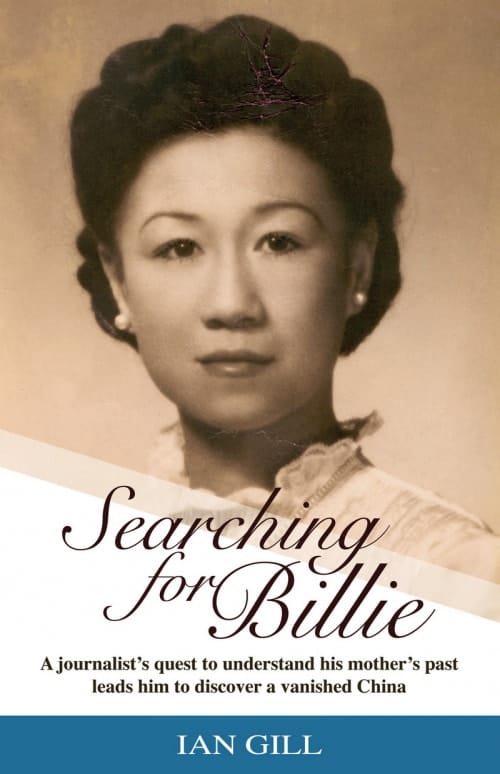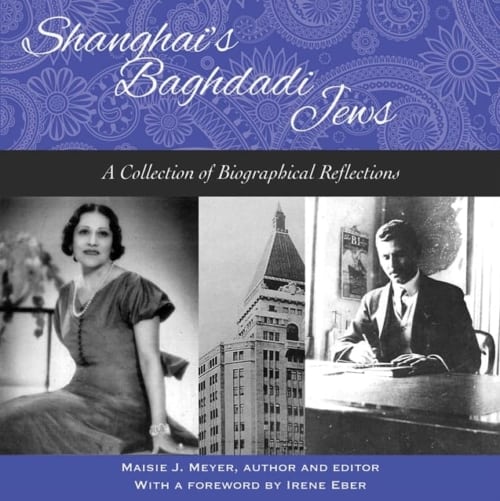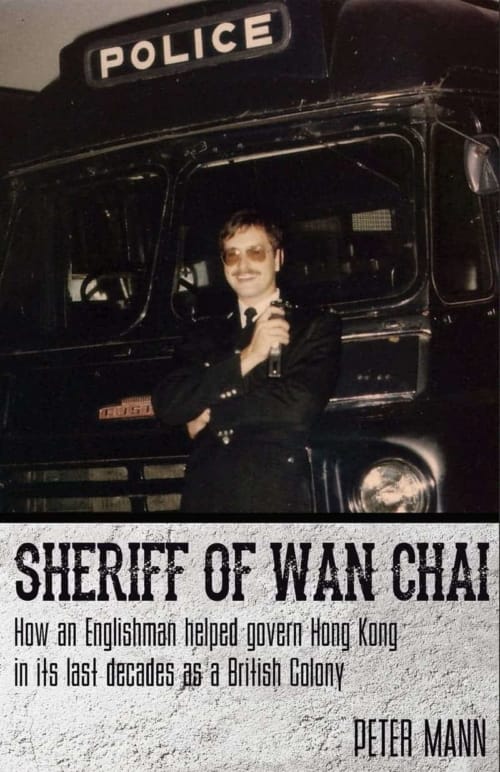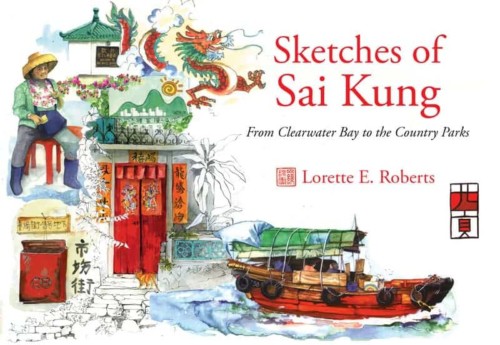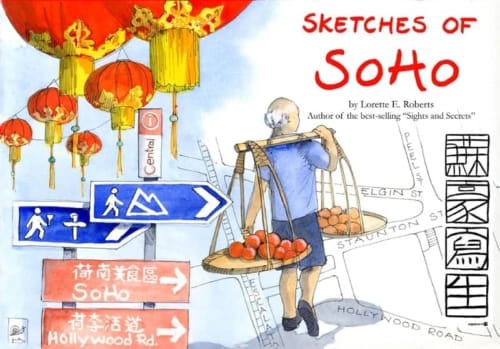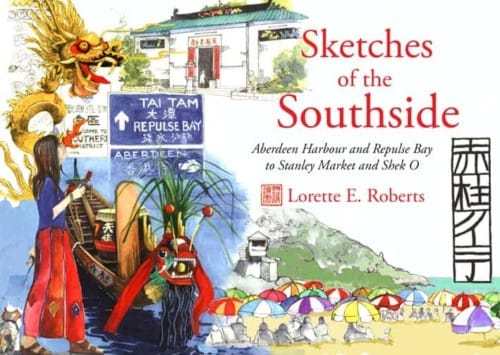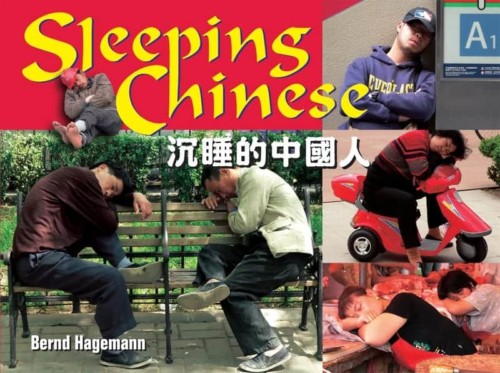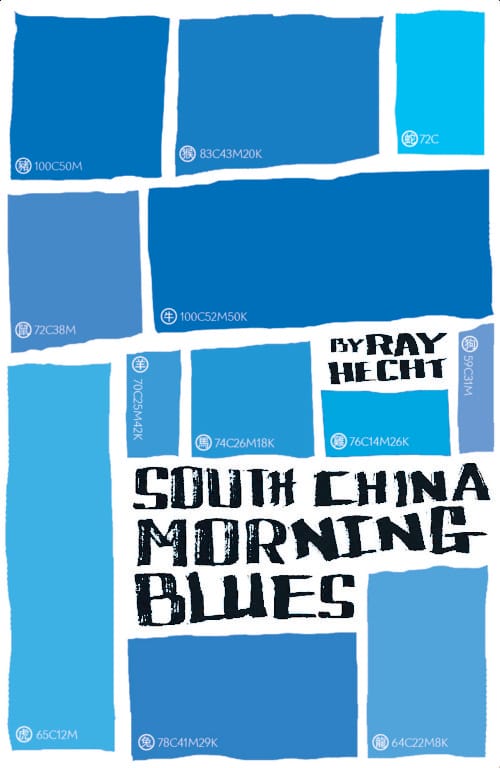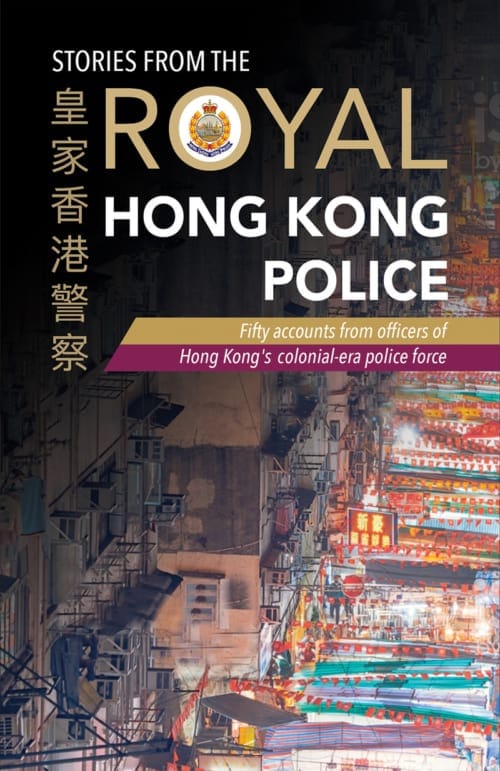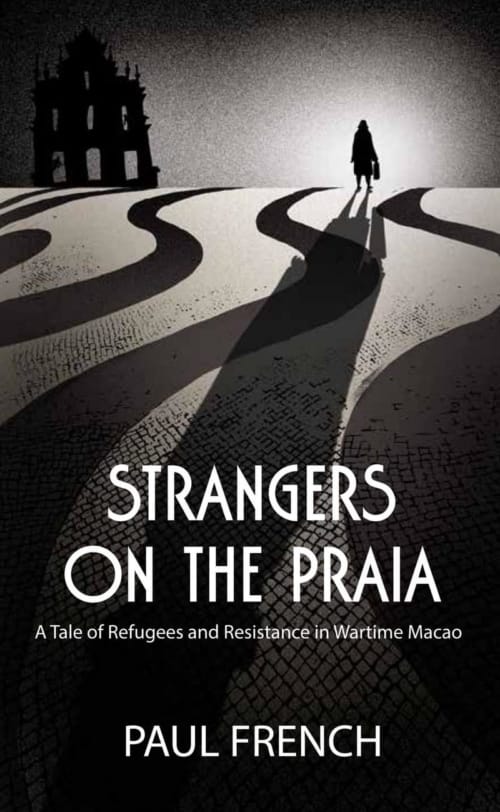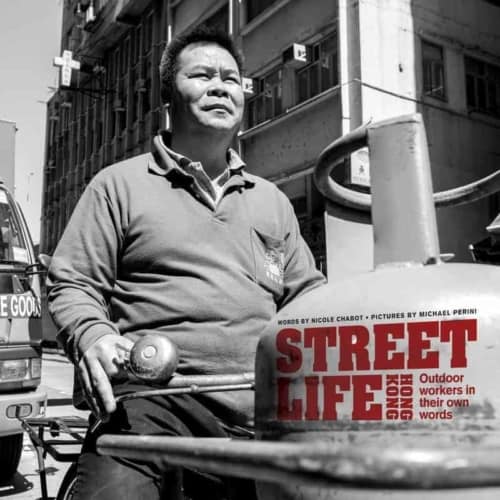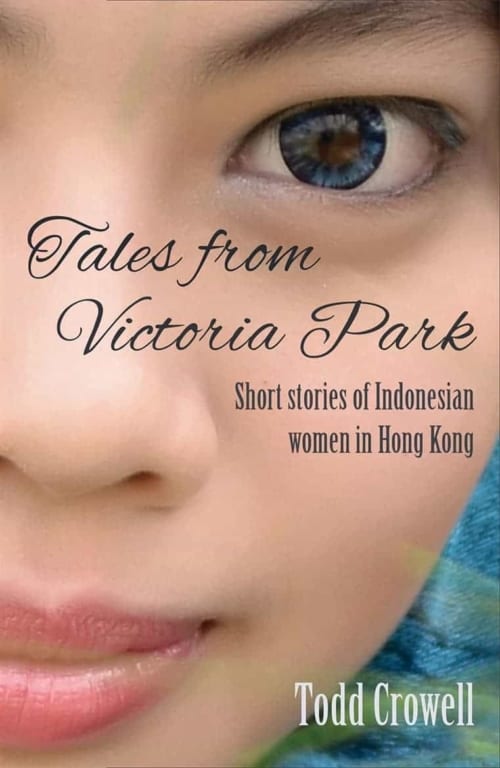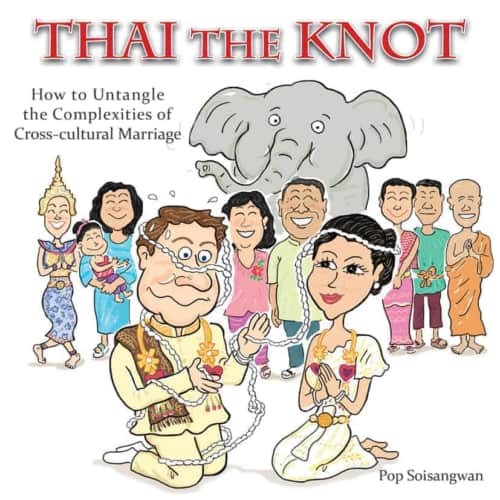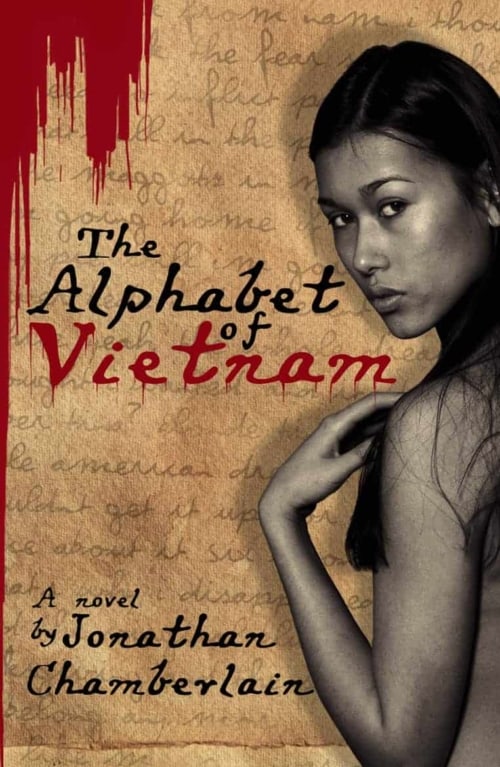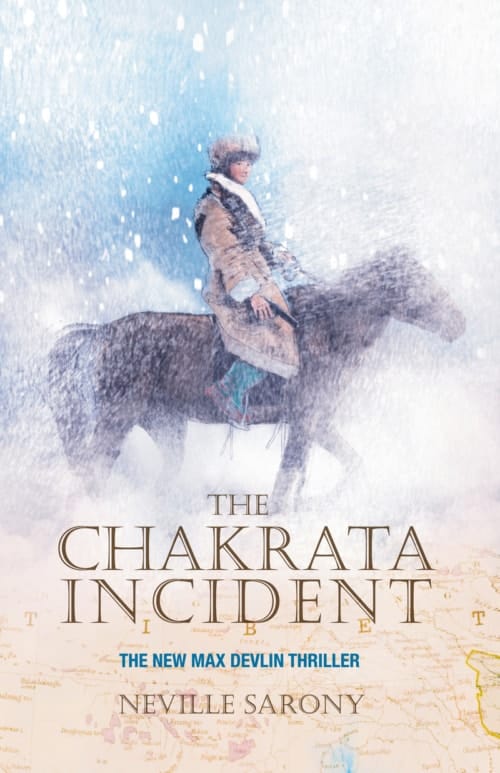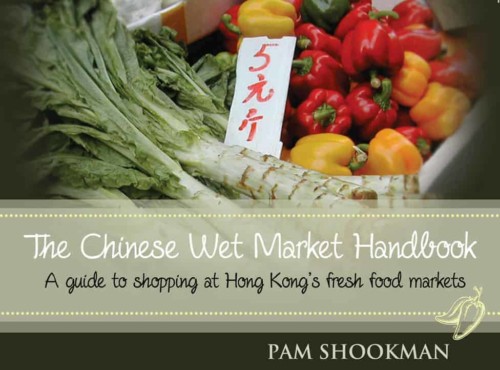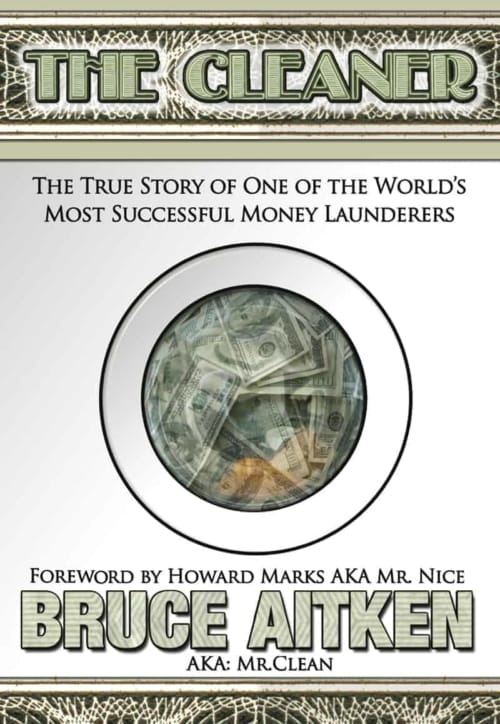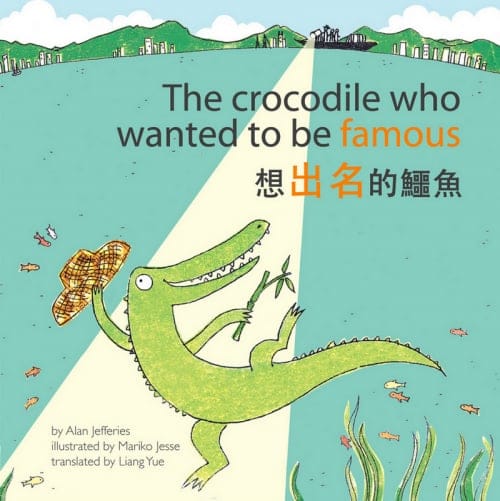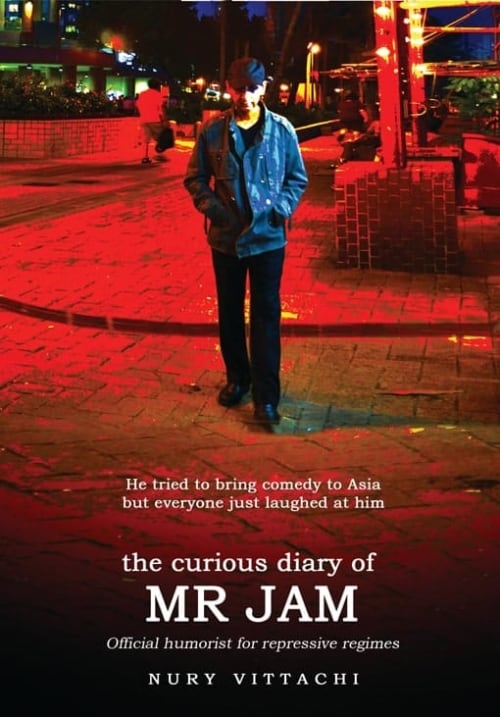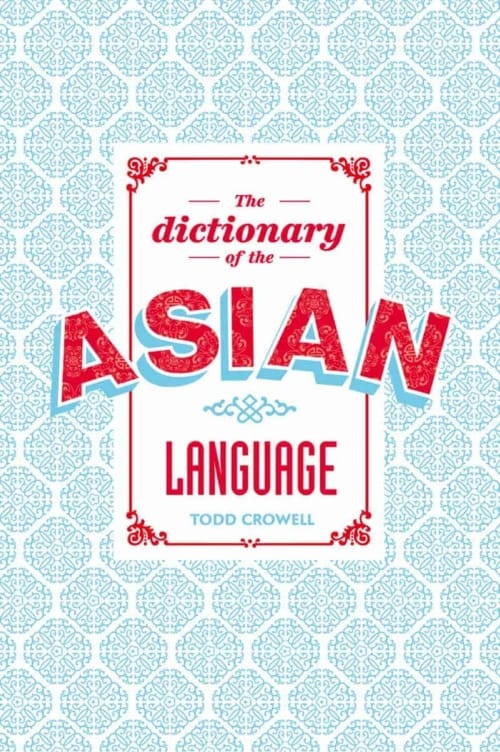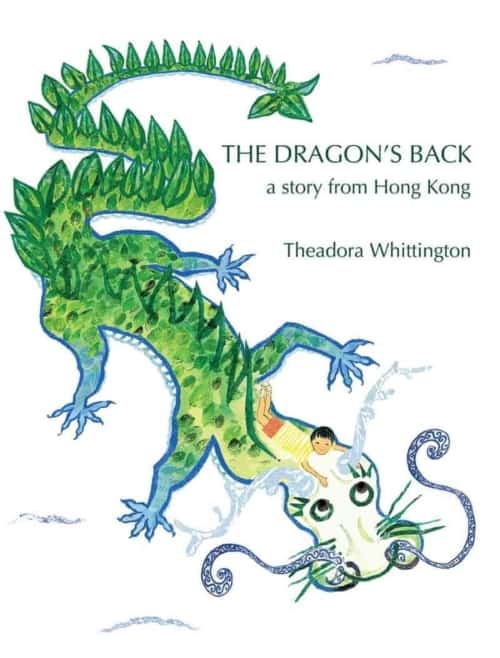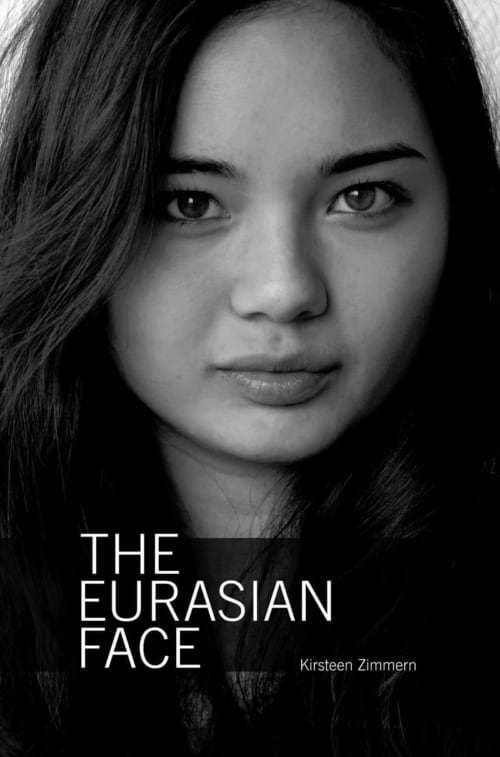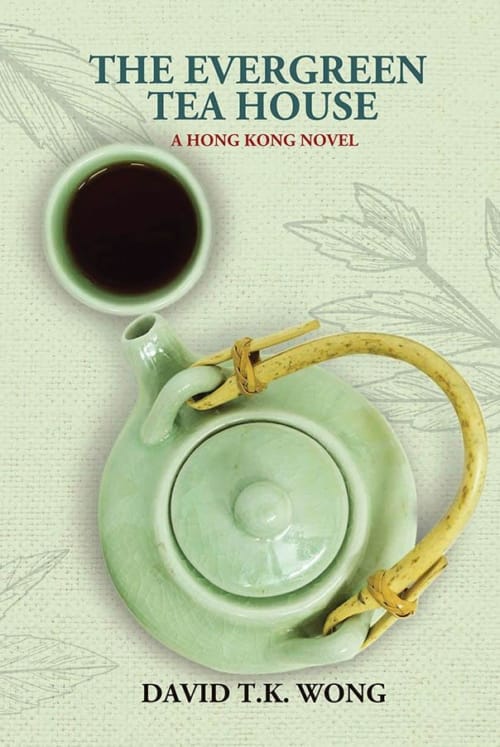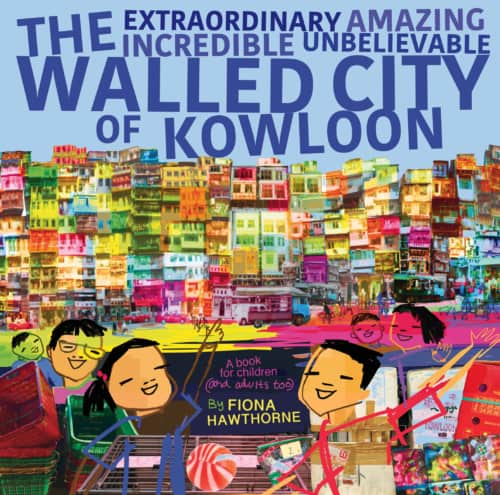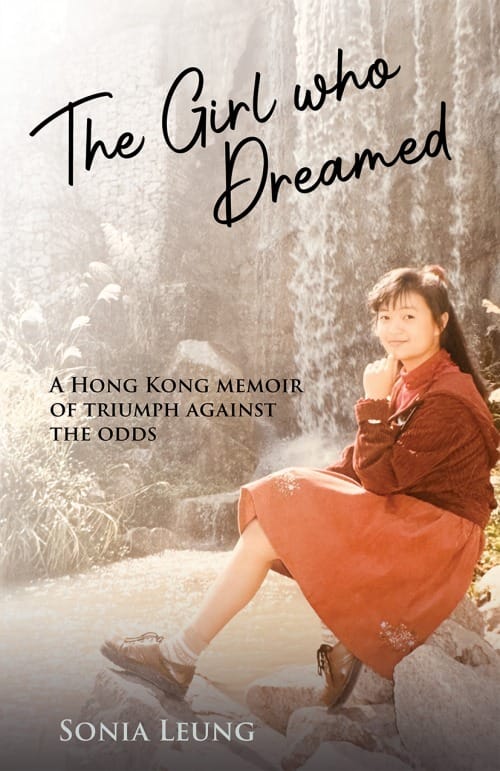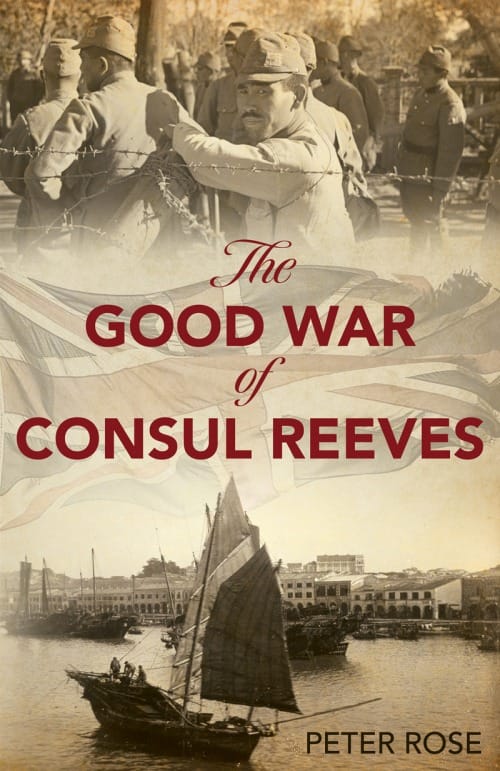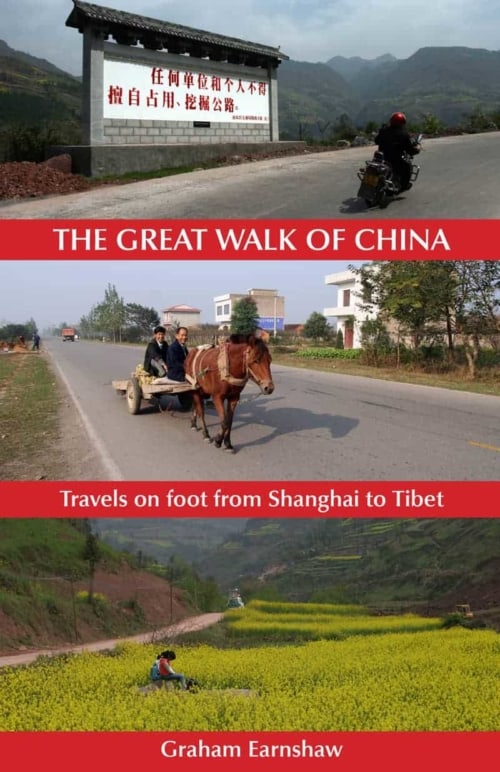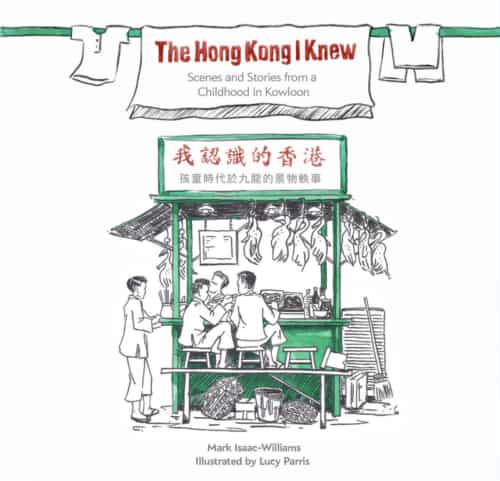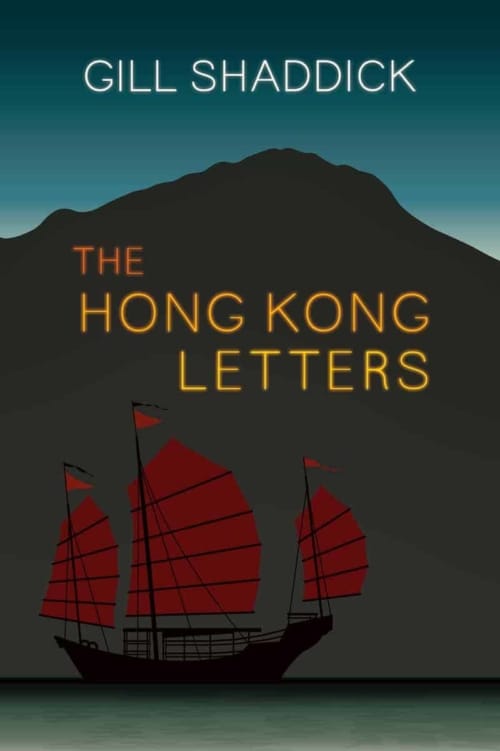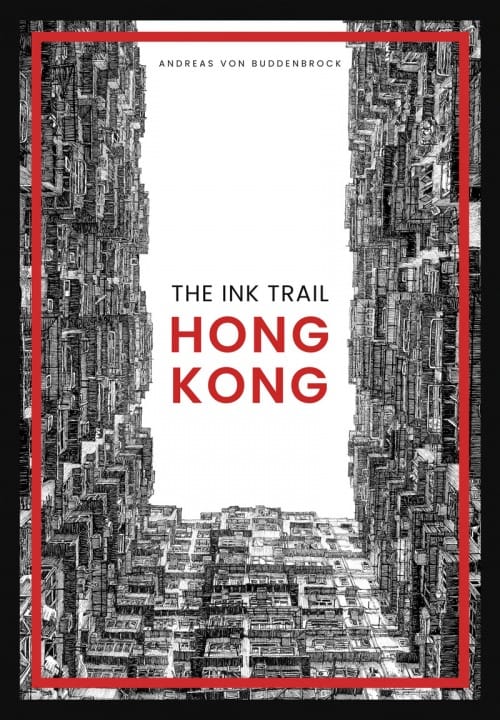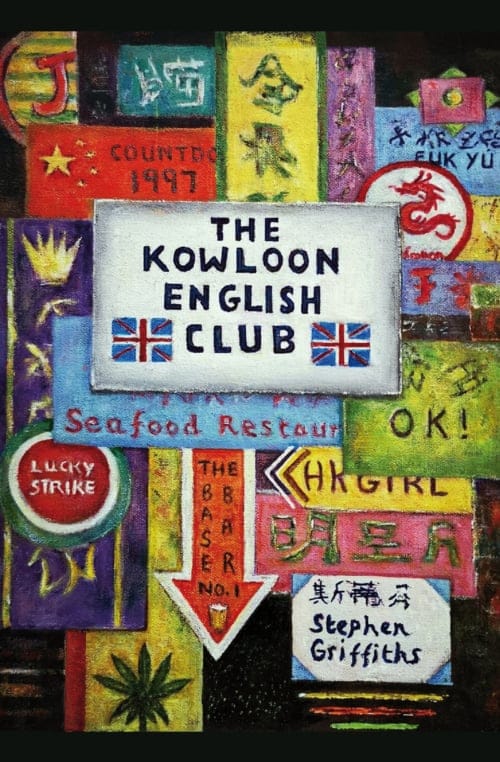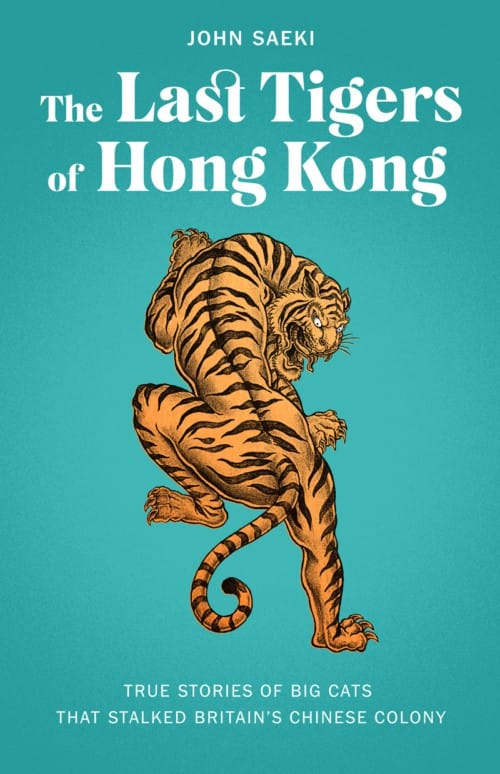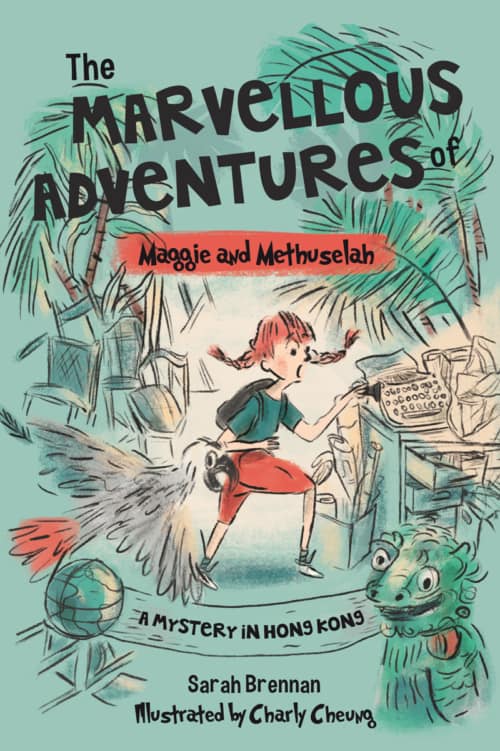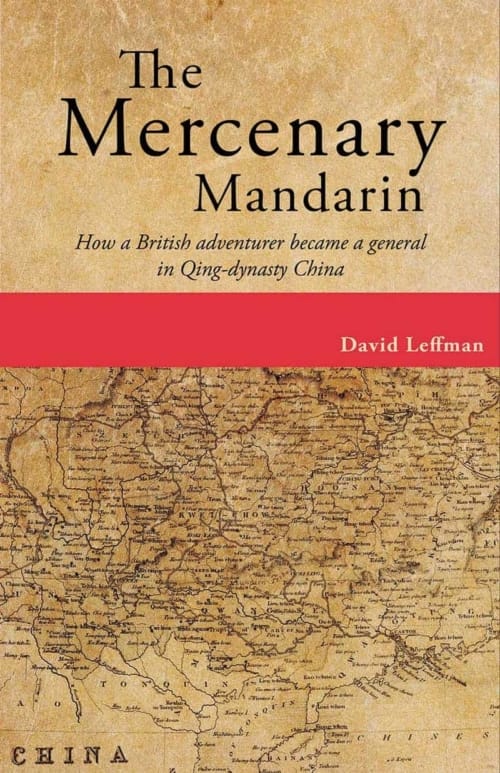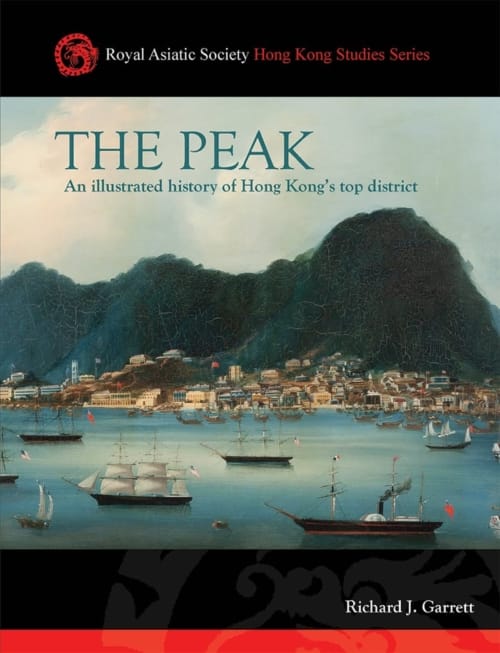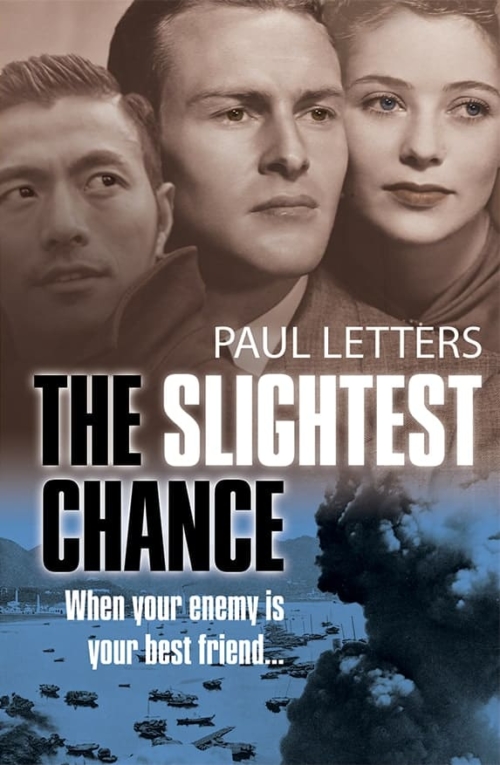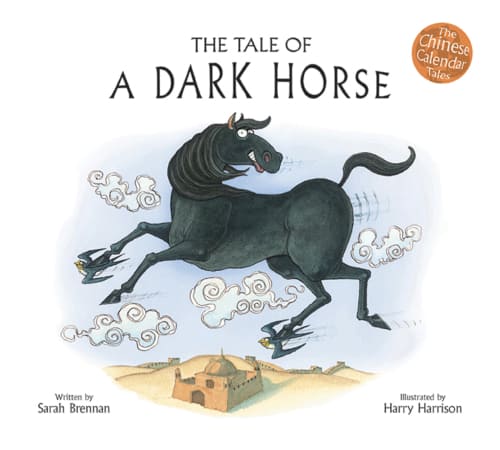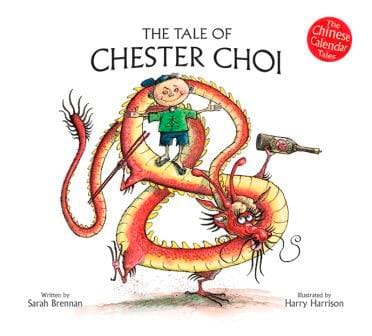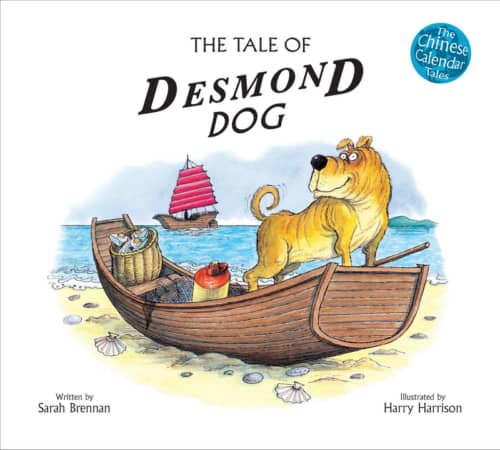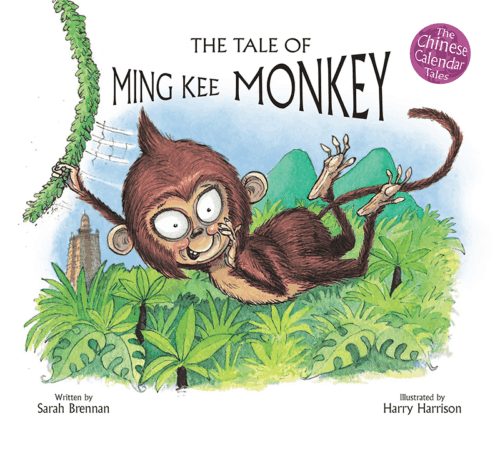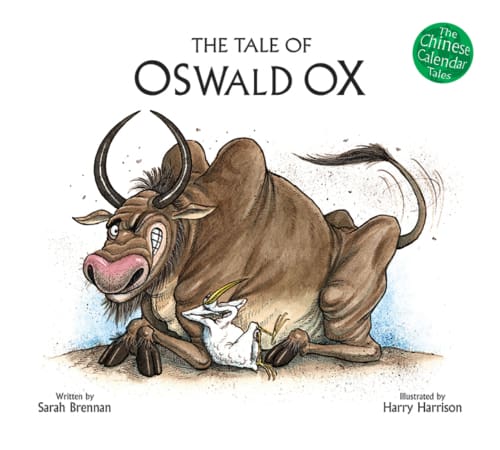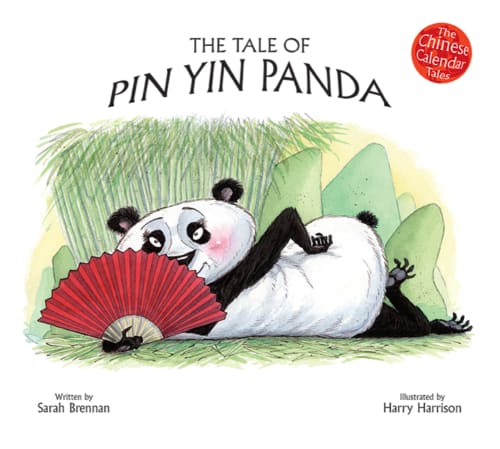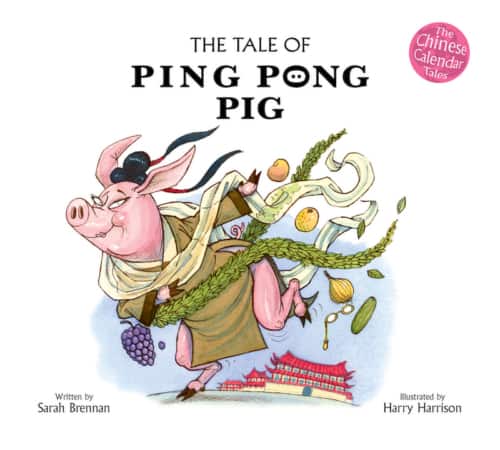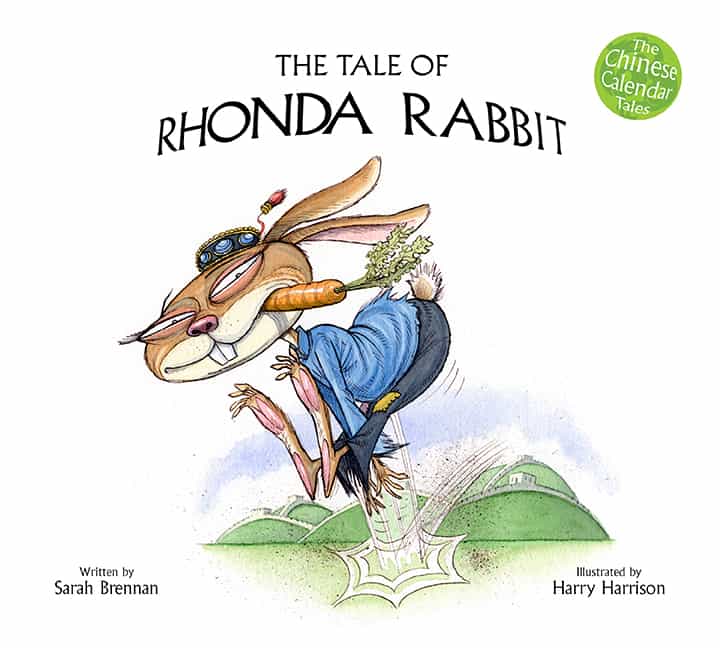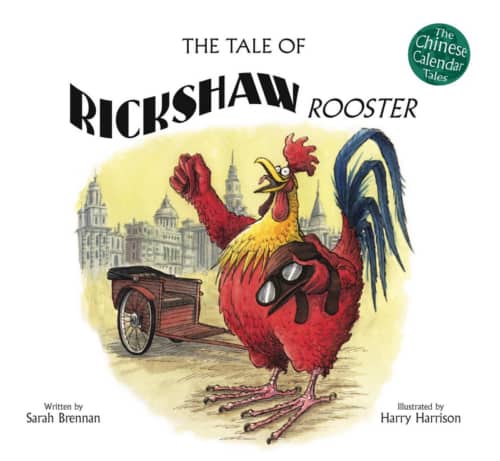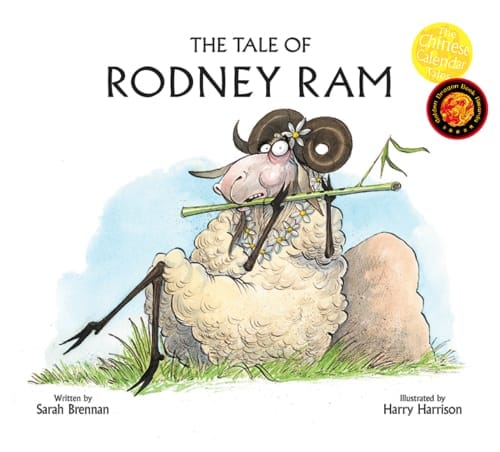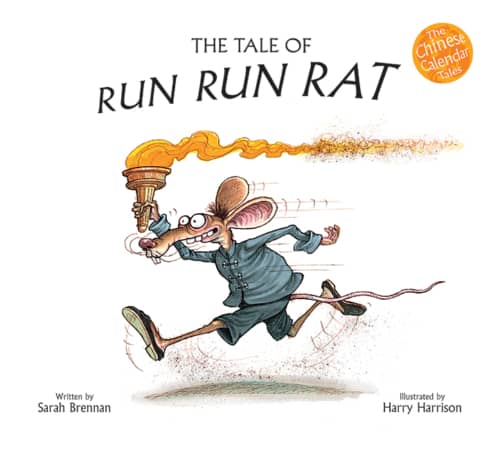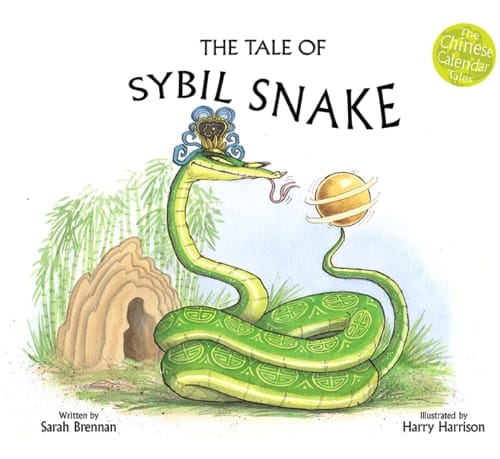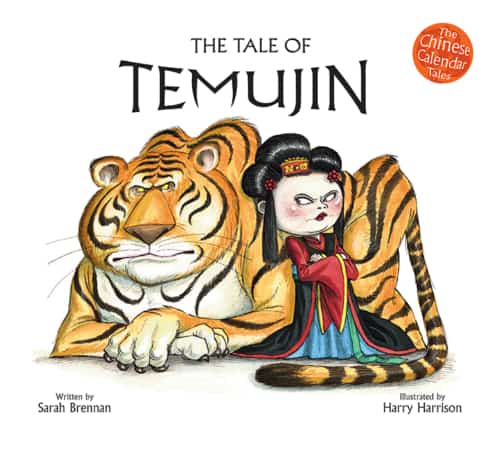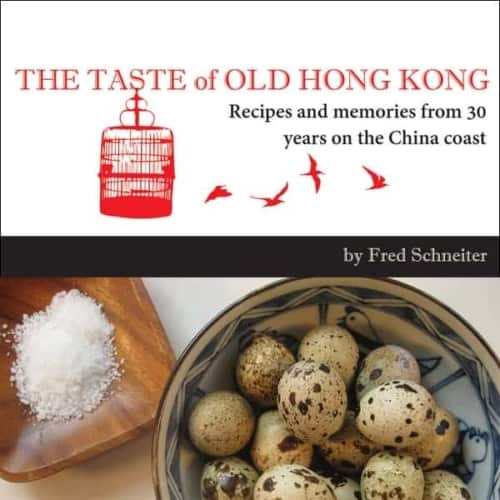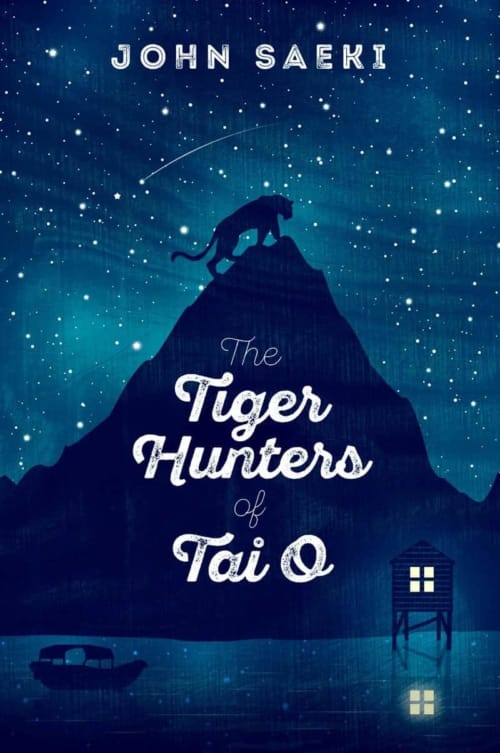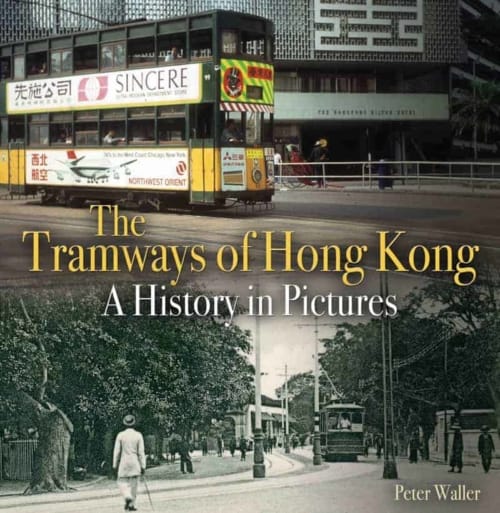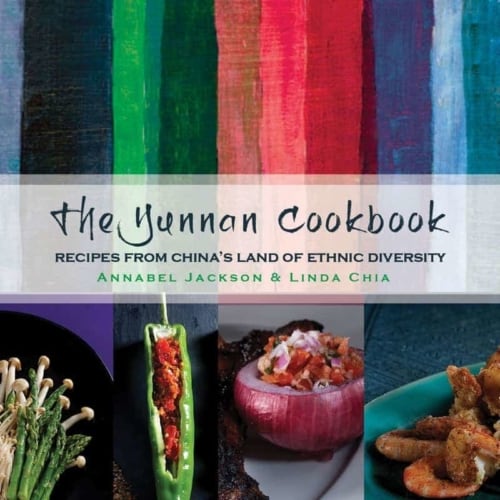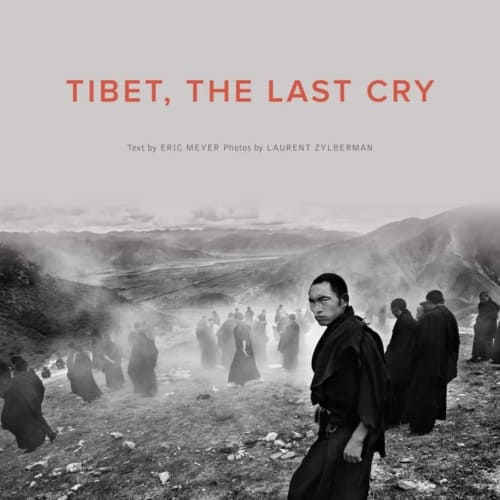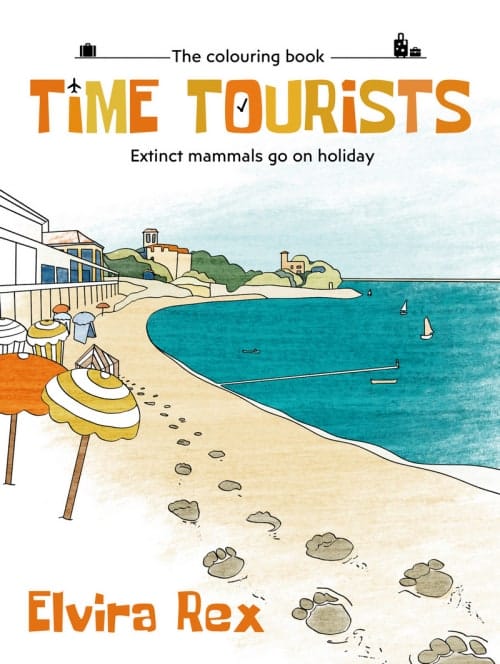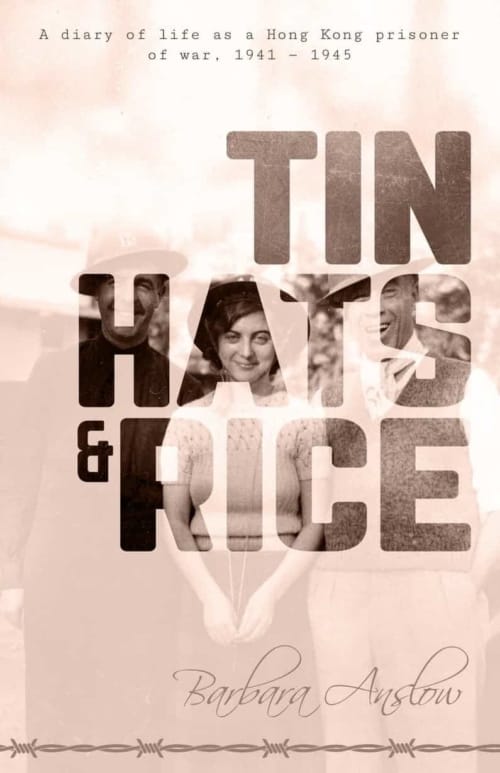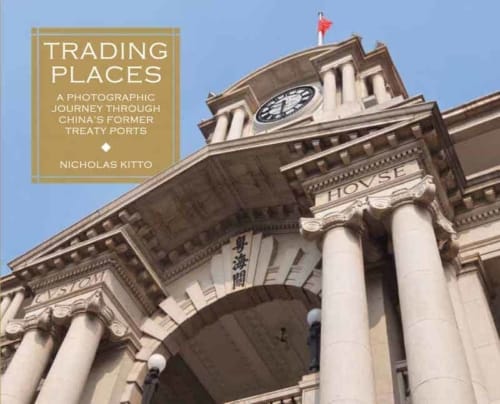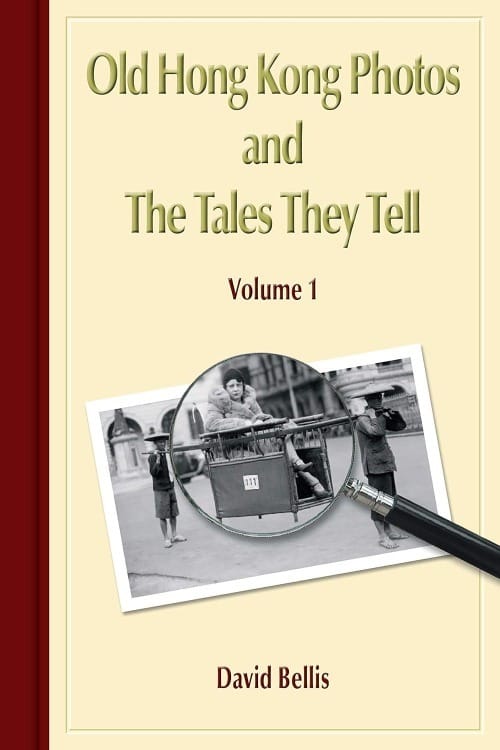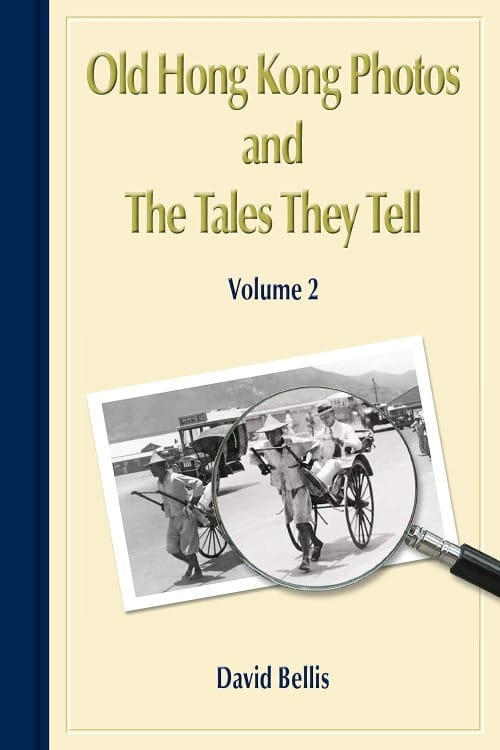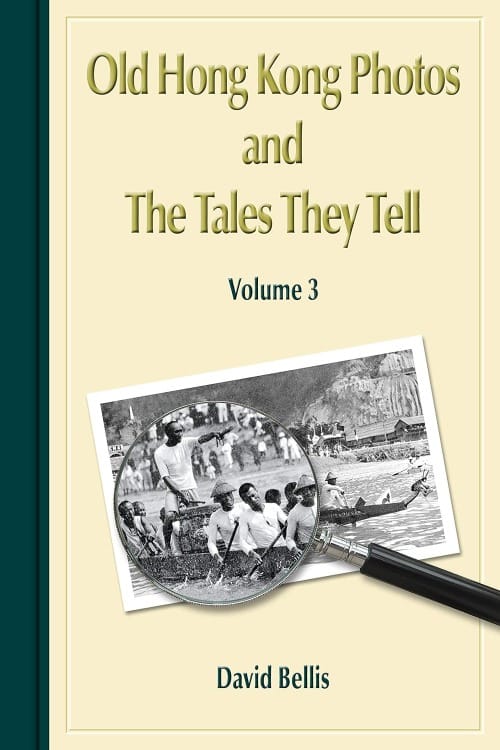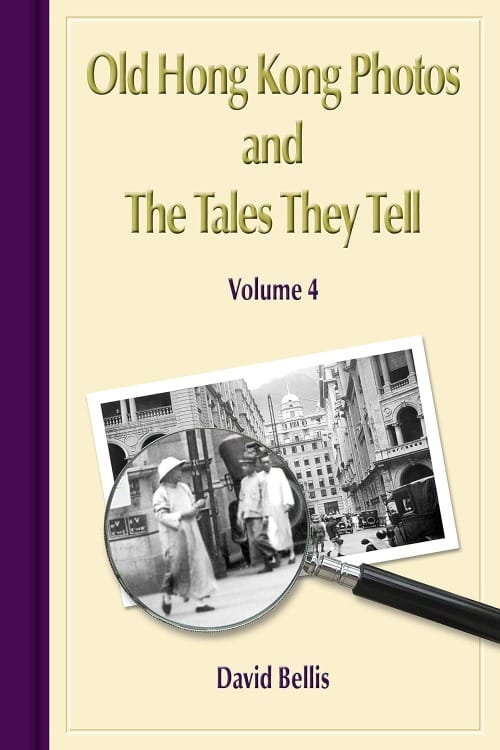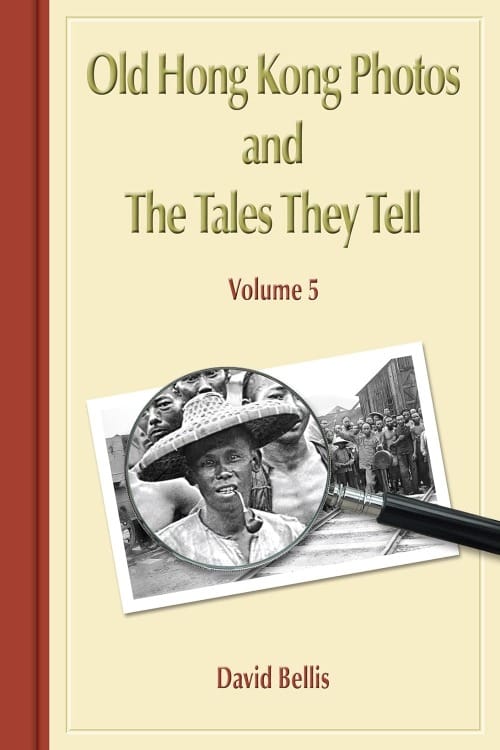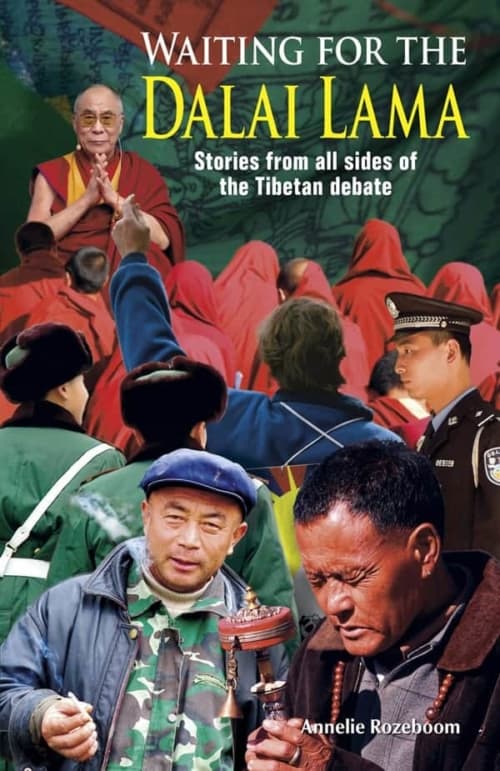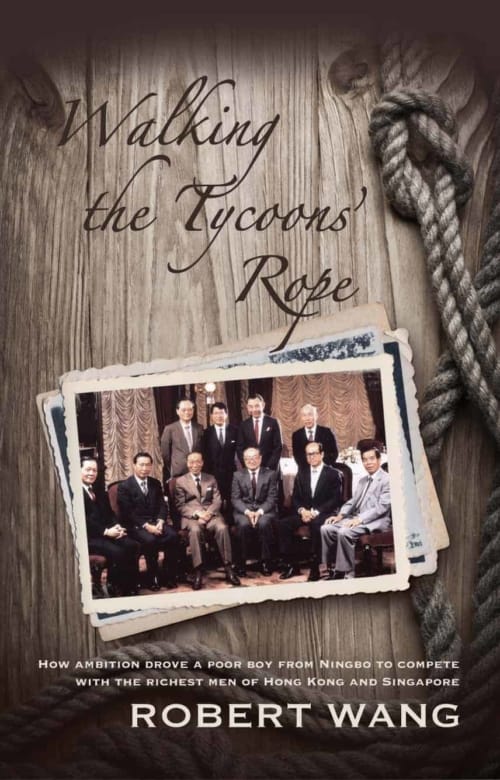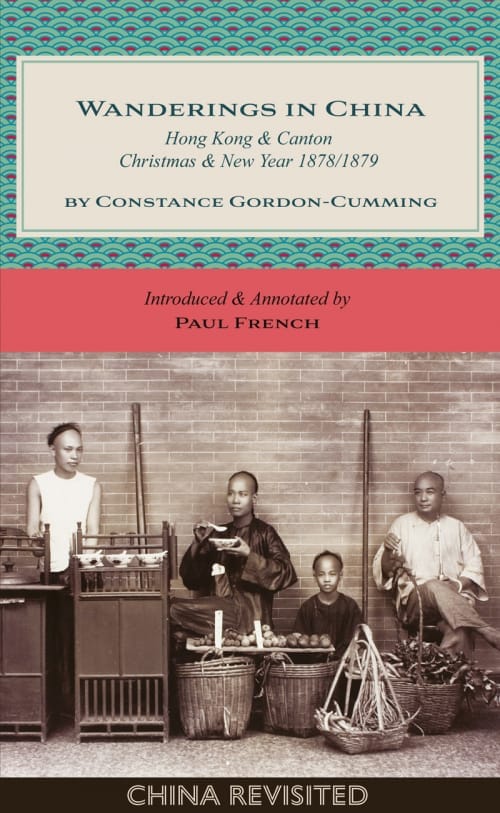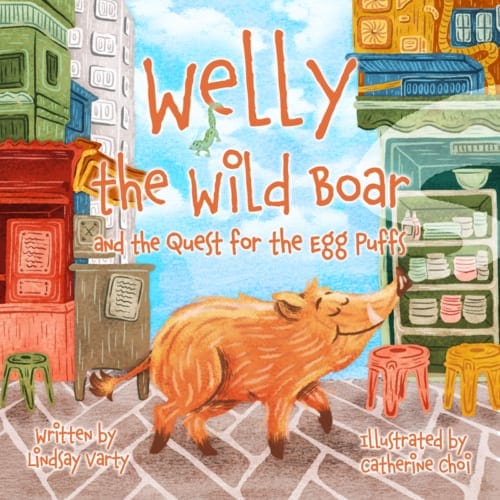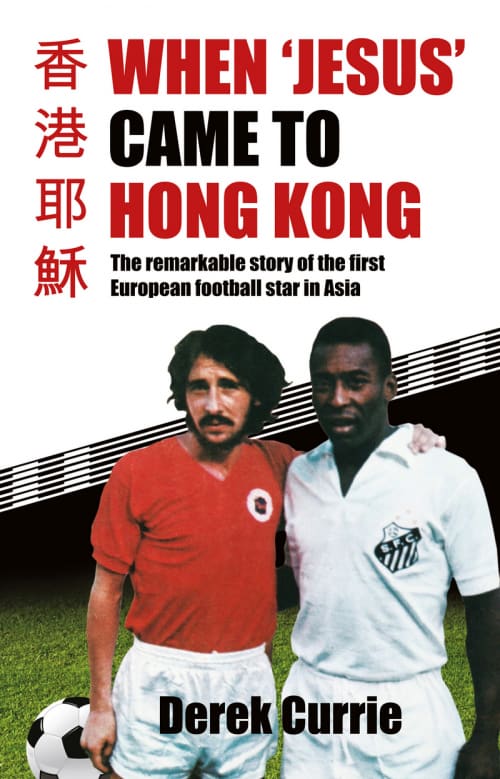-
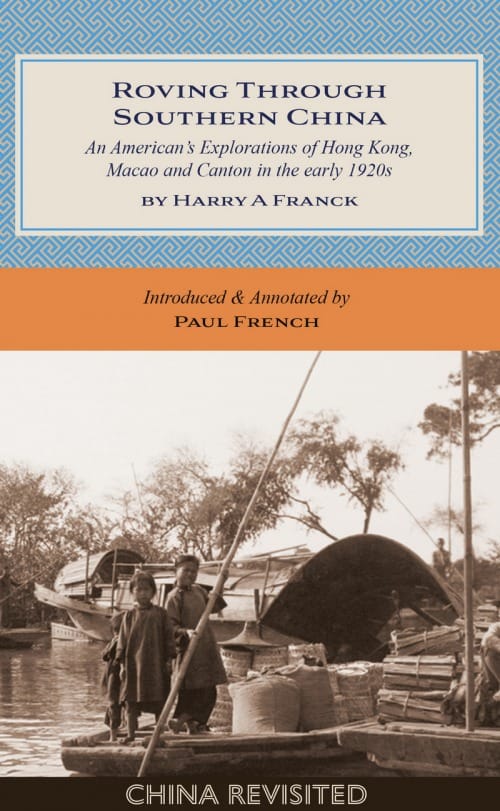 By Harry Franck, introduced and annotated by Paul FrenchNo. 4 in the China Revisited seriesIn the 1920s the American travel writer Harry A Franck was known to readers as the “Prince of Vagabonds”. His wanderings were family affairs and he arrived in southern China in 1923 with his wife, their two young children and his mother. Franck always claimed that his travel plans were random, subject to chance encounters and whatever caught his eye.He arrives in a Hong Kong which is building modern department stores and large houses while labourers sleep on straw mats beside the harbour. In Macao he visits temples, ancient forts and, of course, casinos. And then to Canton (Guangzhou), a city in flux where new buildings are transforming the waterfront, the ancient city walls are being demolished, and the traditional rookeries of small lanes are being replaced by wide asphalt roads as the city rapidly modernises. Franck also provides us with a highly detailed description of Shamian Island a year after the tumultuous strikes and boycotts that meant naval gunboats and barbed wire still protected the small foreign enclave.
By Harry Franck, introduced and annotated by Paul FrenchNo. 4 in the China Revisited seriesIn the 1920s the American travel writer Harry A Franck was known to readers as the “Prince of Vagabonds”. His wanderings were family affairs and he arrived in southern China in 1923 with his wife, their two young children and his mother. Franck always claimed that his travel plans were random, subject to chance encounters and whatever caught his eye.He arrives in a Hong Kong which is building modern department stores and large houses while labourers sleep on straw mats beside the harbour. In Macao he visits temples, ancient forts and, of course, casinos. And then to Canton (Guangzhou), a city in flux where new buildings are transforming the waterfront, the ancient city walls are being demolished, and the traditional rookeries of small lanes are being replaced by wide asphalt roads as the city rapidly modernises. Franck also provides us with a highly detailed description of Shamian Island a year after the tumultuous strikes and boycotts that meant naval gunboats and barbed wire still protected the small foreign enclave. -
 by Paul Ulrich Can the Chinese foil a US oil grab in the Middle East? This topical spy thriller captures the turmoil of the 'war on terror' and weaves agents of the Chinese Government into the plot, pulling the reader into a world of subterfuge and shifting alliances which may well mirror tomorrow's headlines. The story: A young China expert at the US embassy in Riyadh learns a shocking secret: the US will use a hostage crisis as a pretext to invade the Saudi kingdom and seize control of its oilfields. Meanwhile, the daughter of a radical cleric is desperate to escape an arranged marriage. As she attempts to flee the country, her half-brother becomes embroiled in an Al-Qaeda plot to drive out the American infidels -- a plan the newly assertive Chinese are determined to stop. As the US and China compete for mastery of the Gulf, an American diplomat risks betraying his country and a Saudi woman risks her life -- but what price betrayal in a land ruled and divided by harsh Islamic law? Look inside this book Click on the following link to view sample pages from Saudi Match Point. You will need a pdf reader to view this excerpt. Prologue
by Paul Ulrich Can the Chinese foil a US oil grab in the Middle East? This topical spy thriller captures the turmoil of the 'war on terror' and weaves agents of the Chinese Government into the plot, pulling the reader into a world of subterfuge and shifting alliances which may well mirror tomorrow's headlines. The story: A young China expert at the US embassy in Riyadh learns a shocking secret: the US will use a hostage crisis as a pretext to invade the Saudi kingdom and seize control of its oilfields. Meanwhile, the daughter of a radical cleric is desperate to escape an arranged marriage. As she attempts to flee the country, her half-brother becomes embroiled in an Al-Qaeda plot to drive out the American infidels -- a plan the newly assertive Chinese are determined to stop. As the US and China compete for mastery of the Gulf, an American diplomat risks betraying his country and a Saudi woman risks her life -- but what price betrayal in a land ruled and divided by harsh Islamic law? Look inside this book Click on the following link to view sample pages from Saudi Match Point. You will need a pdf reader to view this excerpt. Prologue -

Ian Gill’s first visit to Hong Kong in 1975 takes an unexpected turn when he meets his Chinese mother Billie’s friends, colleagues and fellow ex-prisoners of war, lifting the veil on a tumultuous past in Hong Kong and Shanghai.
He moves to Asia and unravels her intriguing journey: from controversial adoption by an English postmaster in Changsha to popular radio broadcaster in wartime Shanghai, from tragedy and a doomed romance in a Japanese internment camp to being decorated by Queen Elizabeth II for services to the United Nations. He discovers a great-grandmother in a determined English farm girl who ends up owning a well-known hotel on the China coast in the 1870s – and he finally meets his father for the first time on a Canadian island in 1985.
The backdrop for this fascinating family story is China’s turbulent century from the Anglo-Chinese wars of the 1840s to the advent of communism.
Look inside this book:
Contents and Chapter 1 -
Out of stock

with a foreword by Irene Eber
A compilation of 26 biographical accounts from the entire spectrum of Shanghai’s Baghdadi Jewish society offers fresh insights into a remarkable community that lived through the crossroads of China’s 20th-century history.
Using previously unseen diaries and archival material, Shanghai’s Baghdadi Jews documents the rise and fall of larger-than-life personalities who witnessed the Sino-Japanese War, the Occupation of Shanghai and the Communist Party’s rise to power. Photographs illustrate the life and times of these individuals and the magnificent, cosmopolitan city they called home.
Look inside this book
Click on the following links to view sample pages from Shanghai’s Baghdadi Jews. You will need a pdf reader to view these excerpts. -
Out of stock

In 1976, Peter Mann left a gloomy England for the last corner of the British empire: Hong Kong.
As a police inspector, he commanded a sub-unit and led a district vice squad in Kowloon, before joining the colonial government’s Administrative Service and working in the fields of transport, housing, security, environment and tourism. He also served as District Officer, Wan Chai. From raids on gambling dens to organising Governors' visits, his work involved him in all levels of Hong Kong society.
Mann’s memoir is an anecdotal, historical and racy account of Hong Kong’s last decades as a British colony and the colourful story of a young Englishman in the twilight of empire.
“Hong Kong is one of the most intriguing places in the world and its modern history is endlessly fascinating. This book is a highly readable addition to the canon of memoirs which illuminate the period.” – Rachel Cartland, author of Paper Tigress
Look inside this book
Click on the following link to read pages from Sheriff of Wan Chai. You will need a pdf reader to view this excerpt. Arrival in Hong Kong -
Out of stock

From Clearwater Bay to Tai Long Wan, the Sai Kung Peninsula is Hong Kong’s back garden – a place where people go to swim, hike, eat seafood alfresco, and escape the city. But besides the popular beaches and waterfront restaurants, there is an abundance of hidden attractions, and artist Lorette E. Roberts has discovered them for this book.
In these pages you’ll find rolling green hills, weekend junk trips, gambling grannies and pooches on parade; walled village houses and old film studios; Sung-dynasty temples and rice farmers’ implements; fish markets, folk museums and wakeboarding clubs; a Chinese herbalist’s shop and the tools of ancient trades; sampan ladies, fleets of ferries, and ships of all shapes!
Third in a series of bestselling books, Sketches of Sai Kung paints this beautiful area of Hong Kong in a new light.
-
Out of stock

In this full-colour book illustrating life in the colourful area south of Hollywood Road, Hong Kong, Lorette Roberts paints the town red – and orange, and yellow, and green, and blue…
There is a centre foldout of the rainbow-hued Staunton Street restaurants; elsewhere you will find the crimsons and pinks of tiny boutiques and musicians playing live in a purple bar. And those Soho-ites – from uniform in their working clothes to bright and exotic in their street party costumes – they are all there. You might even see yourself!
Yet there is more: the reds and golds of the temple and lantern shops, the muted ochres and turquoises of the old shophouses, the green trees and busy street market in vivid colour and, last but not least, the silver of the Mid-Levels Escalator which leads us to this vibrant district.
A fold-out map at the back of the book will guide you through the less familiar streets. And don't forget to check out the connections between each page and find the ubiquitous snails.
Part of a series of best-selling books by this well-known artist, Sketches of Soho is the perfect gift item for residents and visitors alike.
-
Out of stock

Hong Kong’s Southside – the glimmering stretch of coastline from Aberdeen, through Repulse Bay, Stanley and Tai Tam, to Shek O – is a weekend paradise of restaurants, markets and beaches, the destination of choice for sailors, swimmers, hikers and shoppers. These attractions are all captured by Lorette Roberts in this book but, in her familiar style, she has discovered much more.
There are vignettes of the old villages, complete with traditional watchtowers, temples and scarecrows; sketches from visits to Ocean Park, two museums and a pristine marine reserve; a sampan trip around Aberdeen Harbour, and a secret tunnel to underground wine cellars. There are rugged shores and stunning mountain views; the elegant architecture of The Repulse Bay and Victorian waterworks at Tai Tam; and riotous dragonboat races at Stanley beach!
Whether you are a resident or a first-time tourist, this book will introduce you to new and delightful aspects of the Southside.
Previously published as 'Sketches of Stanley'
-

We hear news reports of the rise of China and its sleepless economy, often with sinister undertones supposed to alarm us. The reality can look very different.
German photographer Bernd Hagemann has long been fascinated by China and its people. He carries his camera at all times, because on every street corner you can find people napping in the strangest positions and situations, even snoring in deep slumber.
“When China wakes, she will shake the world,” warned Napoleon. This may be true. But let’s not forget that hardworking people need their sleep too.
-

There’s no place quite like it. From Guangzhou to Hong Kong, the booming megalopolis of the Pearl River Delta has endless stories to tell. South China Morning Blues is filled with these tales of the postmodern East: depraved, rapidly changing, and never boring.
Just what kinds of people find themselves in 21st-century China? There’s Marco, a crooked businessman with a penchant for call girls; Danny, a culture-shocked young traveler; Sheila, a local club girl caught up in family politics; Amber, a drug-fueled aspiring model; Terry, an alcoholic journalist; and Ting Ting, a lovable artist with a chip on her shoulder. Their lives intertwine in unexpected ways as they delve deeper into their surroundings and in the process learn more about themselves.
China may be leading the world into the future, but its inhabitants will have to make sense of the present if that future is ever going to arrive.
Look inside this book
Click on the following links to view sample pages from South China Morning Blues. You will need a pdf reader to view these excerpts. -

The book you are holding contains secrets and stories about Hong Kong that have never before been published. Prepare to have your preconceived notions of this bustling Asian financial hub butchered as you journey through crevices, enter hidden portals, clamber over barbed-wire fences, evade security guards and infiltrate derelict structures to travel back in time. Your hosts are an anonymous grassroots squad of explorers who will show you a side of Hong Kong only a specialist minority know about.
Although the city has some of the most expensive property on the planet, an unknown world awaits beyond the shimmering skyscrapers and under the glitzy malls. This is the hidden kingdom of non-spaces: environments and structures that lie fallow, usually abandoned and left to rot, or suspended in limbo awaiting evictions and demolition. The HK Urbex crew – a covert collective of urban explorers whose exploits merge archaeology, ethnography, historiography and anthropology – unearth dead zones on the periphery of the city. They invite you to explore haunted schools, rummage through old crime scenes, reconnoitre condemned buildings and uncover the scraps of modernisation which won’t be recorded in history books.
So come inside, confront the aesthetic of loss, discover the value of dead architecture and see Hong Kong as you’ve never seen it before.
-

Fighting to survive on a police patrol launch during a typhoon, and investigating a murder by a Vietnamese gangster in a refugee camp. Battling riots during the Cultural Revolution, countering drug smuggling and pimping by the triads, and dealing with bank robbers in a hostage situation. These are just some of the stories told in this riveting compilation of personal experiences of former Royal Hong Kong Police officers.In 1997, Hong Kong returned to Chinese sovereignty after 156 years of British rule. This collection of no-holds-barred accounts by some 50 individual police officers, put together by three former colleagues, illustrates the last decades of the colony’s colourful history. This is what life was really like on the front line.
LOOK INSIDE THIS BOOK
Click the following link to read excerpts from the book. -

Illustrated by Jane Tanner
Shortlisted for the 2018 Australian Prime Minister's Literary Award, Children's Fiction
A captivating and beautifully illustrated story about three sisters who find a stranded whale on a windswept beach and try to save it.Bleak was the day and the wind whipped down
when I and my sisters walked to town ...
With a powerful, poetic text, wonderful to read aloud, and illustrations full of life and movement, Storm Whale celebrates the majesty and vulnerability of nature and our place in it."A story of the sea and the possibilities of interactions between humans and other creatures… a story of human kindness and hope" - Magpies
Ages 4 to 8
-

Based on true stories and new research, Paul French weaves together the stories of those Jewish refugees who moved on from wartime Shanghai to seek a possible route to freedom via the Portuguese colony of Macao – “the Casablanca of the Orient”.
The delicately balanced neutral enclave became their wartime home, amid Nazi and Japanese spies, escaped Allied prisoners from Hong Kong, and displaced Chinese.
Strangers on the Praia relates the story of one young woman’s struggle for freedom that would ultimately prove an act of brave resistance.
-

with photographs by Michael Perini
Hong Kong is famous for its bustling streets. In this book we hear from two dozen real people who provide its outdoor colour. We meet a flower seller, a street musician and a tram driver; a bouncer, a shoeshiner and a gas canister delivery man; a site foreman and a lifeguard; one man who climbs bamboo scaffolding for a living, and a woman who ferries visitors around the harbour on a sampan.
These are the working people who are always seen but rarely heard, and in this book they tell their life stories in their own words. Sharp black-and-white portraits immerse the reader in the dynamic streetscape of Hong Kong.
Look inside this book
Click on the links below to read pages from Street Life Hong Kong. You will need a pdf reader to view these excerpts.Contents Tony Tam Kwok-Chiu, Assistant foreman Chu Yin-Ping, Sampan tour guide
-

with photography by Gary Jones
Sunset Survivors tells the stories of Hong Kong’s traditional tradesmen and women through stunning imagery and candid interviews. Covering a myriad of curious professions that are quickly falling into obscurity, from fortune telling to face threading and letter writing to bird cage making, readers soon find themselves immersed in the streets of old Hong Kong.
Filled with interviews, photographs and little-known facts about the city’s twilight industries, Sunset Survivors is a tribute to those who keep the flame burning in a city besieged by foreign imports and stiff competition. This book is a celebration of Hong Kong’s cultural identity. It preserves the memory of these hardy men and women, and educates visitors and locals on the foundations on which the city was built.
An up-close and personal look at the industries and workers that gave rise to the Hong Kong of today, Sunset Survivors is more than just a travel or coffee-table book; it is a tribute to the city’s character, a celebration of its roots and a guide to its evolution.
In a city undergoing a dramatic cultural shift, balancing social and political upheaval, the need to document Hong Kong’s traditional livelihoods has seldom been greater. Capturing the true personality of this metropolis, Sunset Survivors is a vital piece of history.
-

Do you have a wardrobe full of clothes but constantly feel like you have nothing to wear? Are you lured by a sale but buy because the price is right instead of the style? Are you guilty of throwing clothes 'away' without knowing where they really go? Would you love to consume more consciously but don't know where to start?
If you've answered yes to at least one of these questions, then this is the book for you.
Hong Kong-based retail professional and sustainable fashion advocate Sheryl Bolden demystifies sustainability within the fashion industry and offers a unique insight into how clothes are bought, worn and discarded. The book's informal chatty tone is relatable, and the pages are packed with tips, tricks and advice on becoming a stylish, savvy and conscious consumer.
Split into three sections that can be read in any order, the book covers everything from shopping and editing your own wardrobe, to exploring innovative new materials and the future of fashion, to simply understanding how fast fashion exploded and changed the industry forever. Punctuated with inspiring and witty quotes and illustrations, this book is perfect for those who strive to curate a wardrobe that reflects their values as well as their style.
-

Victoria Park, the largest expanse of open space in Hong Kong, is the crossroads and away home for thousands of Muslim women who come from Indonesia to find their fortunes, or at least support their families, in the teeming Chinese city. Most come initially as maids, but some lose their employers and descend into the netherworld of overstayers, illegal street hawkers and disco “PR” girls. Whoever they are, they all know Dina: a woman who sells phonecards, changes money, dispenses advice and listens to their tales of exile.
Leila and Ahmed spend the day searching for a place to make love on their one day off, but all the cheap hotels are filled with other lovers celebrating the “End of Ramadan.” Ani finds an unusual way to put a curse on a rival for her affections in “Golden Needles”, while Retno decides that if she becomes a Mormon maybe she can find a regular place to sleep at night. “Wiji” somehow manages to juggle her two Western boyfriends until she manipulates them both into helping her buy a rice field back home, then finds that they insist on accompanying her to her home village as her great benefactors. “Wati and Murtini” grew up in the same small village in Java and worked together in Hong Kong until, on one hot day in Victoria Park, friendship ended in betrayal.
From the comic to the bizarre to the heart-breaking, these cross-cultural tales of exiles in another country build on a sensual evocation of place and character.
-

Western men are beguiled in their thousands by the enchanting women of Thailand. But many make poor choices when it comes to marrying women whose needs, habits and expectations are very different from their own, and a clash of cultures can ruin a romance.
Who better to advise than a Thai woman herself? No topic is taboo as Pop Soisangwan offers insider knowledge on how to secure a successful match. Illustrated with humorous cartoons.
Look inside this book
Click on this link to view sample pages from Thai the Knot. You will need a pdf reader to view this excerpt. -

When men come back from wars, they bring their wars back with them
When Joe dies, his brother Jack thinks it’s an accident... until the parcel arrives with Joe’s diaries and notebooks, and the map of the cabin high up in the Appalachians where Joe’s war buddy, Wash, is hiding out with a girl he’s kidnapped – just the latest in a long line of girls. Joe has one last favour to ask of his brother. He wants Jack to rescue the girl and – if he has to – kill Wash too.
So starts a complex and intense tale that involves a journey back to Vietnam and into the dark past: a past where Clausewitz, the philosopher of war, meets de Sade, the philosopher of man’s own individual evil.
But there are too the incendiary eyes of innocent judgment. And there is love – and love is complicated.
Look inside this book
Click on this link to view sample pages from The Alphabet of Vietnam. You will need a pdf reader to view this excerpt. -

Major Max Devlin, poised for a commanding post in the Royal Gurkha Rifles, is seconded to the SIS for a joint assignment with the CIA at Chakrata, the headquarters of India’s All-Tibetan Special Frontier Force, aka the 22s.
Together with his American counterpart, Devlin is tasked with training and preparing a newly formed elite unit of the 22s for covert cross-border ops inside Tibet, as part of a tripartite project funded by the US to monitor China’s ever-expanding presence in the disputed areas. What begins as a welcome escape for the desk-bound Gurkha officer at the Ministry of Defence quickly becomes deadly toxic – and politically explosive.
A shamanic curse on the misogynist US Ranger risks torpedoing the mission. An Indian cabinet headed by a Sinophile premier and peopled by self-serving ministers is bitterly split on where national (read personal) interests lie. Into the mix come a ruthlessly ambitious Indian intelligence officer whose allegiance is unto himself and a bunch of local politicians bent on avenging the deaths of their salacious sons at the hands of Devlin and his Gurkha sergeant Deepraj.
Once across the Sino-Indian border, the SFF soldiers will be alone – unattributable and expendable if captured by the PLA. Deep into and high on the Himalayas, they come face-to-face with death and torture. Caught in the spinning geopolitical web are three remarkable women – two Tibetan officers and a Muslim combat surgeon – whose courage, faith and skill will be tested to the limits in circumstances beyond their wildest imagination.
As for Devlin, faced with a call on his principles as a professional soldier and the realisation of his cherished ambition in the Royal Gurkha Rifles, he must decide how the die is cast.
A prequel to The Dharma Expedient and Devlin’s Chakra, The Chakrata Incident is Max Devlin’s swansong as a British soldier, setting the scene for his and the trusted Deepraj’s intrepid adventures in the unforgiving terrain that is at the very heart of Asia.
-

Have you ever wondered about that wacky-looking fruit staring back at you in the local wet market? Or did you want to know how to cook a particular Chinese vegetable, but don’t have the language skills?
The Chinese Wet Market Handbook gives you the answers! This pocket-sized guidebook, designed to be taken out shopping with you, identifies fresh produce commonly found at Hong Kong’s food markets.
Each item is identified by a photo, its English name, its romanised Cantonese name with tones, and its name in full-form Chinese characters. The guide explains traditional signage in Chinese characters, including weights and measures, and indicates whether a food is locally produced. Finally, it describes ten lively Hong Kong wet markets especially worth visiting and provides directions on how to find them.
Whether you’re a Hong Kong resident who wants to shop at food markets but lacks the linguistic and culinary know-how, or a tourist who wants to explore the local culinary sights, this handy guide will help you navigate your way around one of the liveliest and most colourful parts of Hong Kong’s food scene.
Look inside this book
Click on the below links to view sample pages from The Chinese Wet Market Handbook. You will need a pdf reader to view these excerpts.pages 2-11 (fruit) pages 23-29 (vegetables) pages 71-75 (dried foods)
-

with a foreword by Howard Marks, bestselling author of Mr. Nice
In the 1980s, Bruce Aitken became one of the world’s most successful money launderers. Discover the ingenious methods he used to shift vast sums of currency across the globe.
From humble beginnings in New Jersey, Bruce was destined to be a baseball player until fate intervened, in the form of a knee injury, and forever changed the course of his life.
What started innocently enough, by answering an ad in the newspaper, turned into a globe-trotting lifestyle of moving money – huge sums of money – for some of the world’s most notorious and shadiest characters. From the jungles of Vietnam to the money capitals of the world, Bruce moved in circles where people would unquestioningly hand over millions of dollars to him on a handshake, to be deposited into Swiss bank accounts.
Learn the truth behind the Lockheed Scandal, the Cessna-Milner affair, the Nugan Hand scandal and one of the largest drug busts in US history that brought the party to an end. It all started to crash via an event in Reno, Nevada, and nearly cost Bruce the rest of his life in prison.
“A unique and perfect insight into the money-laundering world of thirty-odd years ago.” – Howard Marks
-

Illustrated by Mariko Jesse, translated by Liang Yue
Published by Sixth Finger Press, distributed by Blacksmith Books
A television-loving crocodile named Crafty swims from his riverside village to find fame in the big city. His arrival is front-page news all around the world! But once there, he begins to question what he really wants.
Inspired by the real-life saltwater crocodile that visited Hong Kong, The Crocodile who Wanted to be Famous blends fact, fiction and fable – a genuine classic in the making.
-

He tried to bring comedy to Asia, but everyone just laughed at him
Sam Jam’s whole life had been a tragic mistake. As a humorist in Asia he had repeatedly been sacked, blacklisted and chased out of buildings.
But he refuses to believe that his audiences of conservative Muslims, Communist officials, religious police and Asian citizens in general have no sense of humor.
This funny, poignant tale, which the author describes as “a novel for legal reasons”, is more than just laugh-out-loud entertainment. It shines an essential light on what global culture will look like as eastern ways of thinking start to dominate.
Look inside this book
Click on the link to view sample pages from The Curious Diary of Mr Jam. You will need a pdf reader to view this excerpt. -

with cartoons by Ming
Of course there is no single Asian language. But plenty of vogue words from this booming continent are entering English.
Did you know there is a flower named after former North Korean dictator Kim Jong-il? The Chinese have a word – shengnu, literally leftover – for the new phenomenon of unmarried women over thirty. Can you tell your jeepney from your jilbab, or yakuza from the yellowshirts?
These are just some of the hundreds of words that illuminate little corners of life and culture in a pan-Asian selection of keywords from the zeitgeist.
Look inside this book
Click on the following link to read pages from The Dictionary of the Asian Language. You will need a pdf reader to view this excerpt. -

Chinese fung shui tells us there is a dragon inhabiting every green valley, protective of the mountains and its route to the sea.
Hiking into the hills of Hong Kong for a weekend picnic, Luke and his parents suddenly find their path blocked by a forest fire. Can the friendly mountain dragon help? Or is the mythical creature equally at risk from the actions of careless human beings?
With original painted art, and a cut-out dragon for children to make themselves, The Dragon’s Back sends a gentle message of caring for the environment.
-
Out of stock
 No one represents diversity better than Eurasians – those individuals with a mix of Caucasian and Asian heritage. Once a source of shame, the Eurasian face has become the face that sells. It is the face with which everyone can identify. In an ever-shrinking world, the search is on for a one-size-fits-all global image. Eurasians have become the world’s poster boys and girls, much sought after as actors and models. Taking advantage of increasingly tolerant times and the growing commercial and cultural exchanges between East and West, Eurasians have gained prominence as entrepreneurs, professionals and athletes. This book of interviews and black-and-white portraits reveals how seventy Eurasians of diverse backgrounds see their place in the world today. Kirsteen Zimmern is a photographer of Chinese and Scottish ancestry. She has always been fascinated by the tell-tale signs of East and West in the faces of fellow Eurasians, and has found this fascination to be widespread: few days go by without strangers examining her appearance to discern her ethnicity. She lives in Hong Kong. Look inside this book Click on the below link to view sample pages from The Eurasian Face. You will need a pdf reader to view this excerpt. Pages 48-59
No one represents diversity better than Eurasians – those individuals with a mix of Caucasian and Asian heritage. Once a source of shame, the Eurasian face has become the face that sells. It is the face with which everyone can identify. In an ever-shrinking world, the search is on for a one-size-fits-all global image. Eurasians have become the world’s poster boys and girls, much sought after as actors and models. Taking advantage of increasingly tolerant times and the growing commercial and cultural exchanges between East and West, Eurasians have gained prominence as entrepreneurs, professionals and athletes. This book of interviews and black-and-white portraits reveals how seventy Eurasians of diverse backgrounds see their place in the world today. Kirsteen Zimmern is a photographer of Chinese and Scottish ancestry. She has always been fascinated by the tell-tale signs of East and West in the faces of fellow Eurasians, and has found this fascination to be widespread: few days go by without strangers examining her appearance to discern her ethnicity. She lives in Hong Kong. Look inside this book Click on the below link to view sample pages from The Eurasian Face. You will need a pdf reader to view this excerpt. Pages 48-59 -

In the wake of the Hong Kong protests, memories of the colonial past are fading. This new edition of David T. K. Wong’s sweeping historical novel brings the past vividly to life.
The Evergreen Tea House is a deftly crafted, provocative and poignant tale which blends mismatched love and twisted ambition with political intrigue and diplomatic mendacity. Set in Hong Kong during the twilight years of British rule, the characters live through tumultuous events – the Japanese occupation, the Korean War, the Cultural Revolution – and the emotional trauma associated with the Sino-British Joint Declaration, which precipitated Hong Kong's handover to China.
The unique and noteworthy element of this novel, beyond its strong evocation of time and place and its careful melding of facts with fiction, is its interpretation of historical events through a Chinese perspective.
-
 Imagine living in a high-rise mini-city that people built with their own hands. This city took up only the size of a sports stadium, but it was home to sixty thousand people! What would it be like to live in the most tightly packed place on Earth? Fiona wanted to find out, so she went there to paint, draw and meet the people of the amazing Kowloon Walled City. There was nowhere else in the world like it. The extraordinary things she discovered are inside this book… Based on Fiona Hawthorne's real-life experiences in the famous Walled City of Kowloon, this is a children's book which is also for adults. A young female artist ventures into a place that everyone tells her is dangerous, but she spends time getting to know the people, and draws and paints their everyday lives. By doing so, she discovers the truth: that the Kowloon Walled City was industrious, child-friendly and welcoming. Even though the Walled City was very much Hong Kong, this story of discovery and acceptance is universal. Vibrant, colourful, detailed artwork depicts the busy life of a unique community that no longer exists.
Imagine living in a high-rise mini-city that people built with their own hands. This city took up only the size of a sports stadium, but it was home to sixty thousand people! What would it be like to live in the most tightly packed place on Earth? Fiona wanted to find out, so she went there to paint, draw and meet the people of the amazing Kowloon Walled City. There was nowhere else in the world like it. The extraordinary things she discovered are inside this book… Based on Fiona Hawthorne's real-life experiences in the famous Walled City of Kowloon, this is a children's book which is also for adults. A young female artist ventures into a place that everyone tells her is dangerous, but she spends time getting to know the people, and draws and paints their everyday lives. By doing so, she discovers the truth: that the Kowloon Walled City was industrious, child-friendly and welcoming. Even though the Walled City was very much Hong Kong, this story of discovery and acceptance is universal. Vibrant, colourful, detailed artwork depicts the busy life of a unique community that no longer exists. -
 At the age of 14, Sonia Leung was raped by her ping-pong coach.She had moved from China two-and-a-half years earlier to join her family in Hong Kong, but she could not fit in. The family of six lived in a cramped subdivided hut in a Kowloon squatter village but rarely communicated with each other. The difficulties of adjusting to colonial Hong Kong heightened the tensions between her parents. Feeling trapped and unloved, Sonia was too afraid to tell anyone about the rape. She saved money by working part-time at McDonald's and, a year later, she bought a one-way plane ticket to Taipei and ran away from home.The Girl Who Dreamed is a memoir of her childhood in mainland China, Hong Kong and Taiwan – and how, through work and further education, she found her way to an independent life away from the family and world from which she needed to free herself.
At the age of 14, Sonia Leung was raped by her ping-pong coach.She had moved from China two-and-a-half years earlier to join her family in Hong Kong, but she could not fit in. The family of six lived in a cramped subdivided hut in a Kowloon squatter village but rarely communicated with each other. The difficulties of adjusting to colonial Hong Kong heightened the tensions between her parents. Feeling trapped and unloved, Sonia was too afraid to tell anyone about the rape. She saved money by working part-time at McDonald's and, a year later, she bought a one-way plane ticket to Taipei and ran away from home.The Girl Who Dreamed is a memoir of her childhood in mainland China, Hong Kong and Taiwan – and how, through work and further education, she found her way to an independent life away from the family and world from which she needed to free herself. -

Months before the start of the Pacific War in 1941, John Reeves – his career and marriage failing – is posted as British consul to the tiny Portuguese colony of Macao in southern China.
The Japanese soon declare war on the West with their attacks on Pearl Harbor and Hong Kong. But because Portugal is neutral, Macao is left alone and becomes a tiny island of neutrality, an Asian Casablanca surrounded by Japanese-occupied China.
Reeves, a lonely and awkward man, finds himself the only senior representative of the Allies within a radius of thousands of miles. He runs spy rings, collects intelligence, smuggles people to freedom, takes care of refugees and is threatened with assassination – and The Good War of Consul Reeves tells his story.
-

What kind of people would you meet if you decided to walk across the world's most populous country?
The Great Walk of China is a journey into China's heartland, away from its surging coastal cities, where the ripples of prosperity are only just beginning to be felt and many find themselves left behind.
Through his conversations with the people he meets along the way, the Chinese-speaking Earnshaw paints a portrait of a nation struggling to come to terms with its newfound identity and its place in the world. Our wandering guide never backs away from sensitive and sometimes uncomfortable topics, and captures the essential kindness and generosity of the Chinese people with brilliant clarity.
Look inside this book
Click on the following link to view sample pages from The Great Walk of China. You will need a pdf reader to view this excerpt. -

Illustrated by Lucy Parris
Returning to Hong Kong in 1947 after the Japanese occupation, seven-year-old Mark Isaac-Williams had the whole of Kowloon as his playground. Billeted with his family in the once-grand but now dilapidated Peninsula hotel, his life was full of adventure – from the rooftop to the basement, he knew the hotel's every inch.
Roller-skating and horseback riding in Kowloon's streets and paddling in the hotel's fountain were a child's dream after the privations of war. From rickshaws to firecrackers and ladies with bound feet to the ever-present rat problem and smelly beancurd vendors, the mystique of Hong Kong in the 1940s and 50s is brought colourfully to life by Mark's captivating and richly illustrated story.
“The Hong Kong I Knew captures all the glory and quirkiness of a burgeoning east-meets-west colony at mid-century. Fizzing firecrackers, rickshaws in the rain, balusters of bamboo scaffolding – the charming illustrations and commentary are sure to inspire fond nostalgia for a bygone time.” — Claire Chao, author of Remembering Shanghai
-

In 1969, at the height of China’s Cultural Revolution, a yacht sails out of Hong Kong and disappears. The world’s press takes up the story of the crew who are presumed lost at sea. But Gill and her friends are very much alive, held captive in a Chinese fishing village by Communist militia. As she faces questioning by the People’s Liberation Army, there’s a lot that Gill would rather not tell – that her crew-mates are British soldiers; her flatmates are Japanese, old adversaries of the Chinese; or that her boss, the doyen of advertising in Hong Kong, is well known for ‘firing Reds’.
In this spirited memoir, where Mad Men meets Han Suyin’s A Many Splendoured Thing, Gill recreates a Hong Kong of the imagination. Twenty-one, attractive and naïve, wined and dined by Hong Kong’s elite, Gill learns to stand her ground at her job in an advertising agency under the directive of the narcissistic Mrs Church. Her luck changes when Paddy O’Neil-Dunne joins the firm – he is just as eccentric but much more fun. After several visits to a casino in the nearby Portuguese enclave of Macau, Paddy embarks on the longest roulette game ever played and he insists Gill join in. But Gill finds the sparkling waters of Hong Kong’s seascape more seductive than the world of business and money; she takes up sailing and falls in love.
The backdrop is a gift. The Colony is an anachronism, a last vestige of British colonialism. Yet as Communist ideology gathers pace in neighbouring China, Hong Kong seizes every new opportunity and so does the author. Unexpected twists and a host of funny, bizarre and whimsical events are captured in her lyrical memoir.
Carefully bundled and tied together with ribbon, Gill’s letters from Hong Kong had remained untouched for nearly fifty years. When she untied them, she remembered her father’s words: “I think there’s a book in there.”
-
 For years, Andreas von Buddenbrock – also known as “The Ink Trail” – has been filling sketchbook after sketchbook with ink drawings that all aim to capture the places and people he comes across; from market stalls and their vendors to high rises and dilapidated buildings to lush, winding nature trails.The Ink Trail: Hong Kong offers a selection of his best drawings, from the start of his journey in 2017 to the end of 2023. Step into the world of an ink-pen artist as he guides you around the diverse locations of Hong Kong, offering personal anecdotes, thoughts behind his creative process and more.
For years, Andreas von Buddenbrock – also known as “The Ink Trail” – has been filling sketchbook after sketchbook with ink drawings that all aim to capture the places and people he comes across; from market stalls and their vendors to high rises and dilapidated buildings to lush, winding nature trails.The Ink Trail: Hong Kong offers a selection of his best drawings, from the start of his journey in 2017 to the end of 2023. Step into the world of an ink-pen artist as he guides you around the diverse locations of Hong Kong, offering personal anecdotes, thoughts behind his creative process and more. -

Asia, 1996. What do you do when you have failed to find the meaning of life in India, your money has run out, your girlfriend has gone, and prospects at home are limited? Go further east, young man!
Meet Joe Walsh, a backpacker who is determined to put a wayward life behind him and make it big in Hong Kong, where fortune still favours the British and opportunities are there for the taking. In the final full year of British-ruled Hong Kong, tourists and hordes of transient workers are exploiting the economy as well as the occasion.
Arriving almost penniless, with issues in love and life, Joe decides to make the most of this opportunity: he discovers one of the world’s most exciting cities, finds challenging new jobs, makes friends with an extraordinary cast of characters, and dates local women. He finds himself absorbed into a vibrant social scene through the communal existence of a travellers’ hostel, where drink, drugs and casual sex are a way of life. A stint selling sandwiches gives way to an English-teaching job, where he can at last start to live out his ambitions.
But an already stressful existence worsens after a night out goes wrong. As personal relationships sour and the pressures of long hours, minimum pay, classroom clashes and abject living conditions mount, Joe is forced to confront people he wishes he’d never met, and answer important questions that cannot be put off a moment longer.
-

With pen-and-ink illustrations by Gary Yeung
Tigers came to Hong Kong. They preyed on pigs, chickens, cattle and deer. They sometimes killed people. They came to Hong Kong most years through to the end of the 1950s, and possibly into the 1960s. As long as there were South China tigers in the wild, Hong Kong saw some of them.
They stopped coming when they were on their way to extinction in their homeland across the border. Not many people know this, and not many people believe it to be true. But it is true, tigers came. And this is the first written history of the Hong Kong tiger.
LOOK INSIDE THIS BOOK
Introduction Chapter 1
-
 Illustrated by Charly Cheung Maggie loves hanging out with her best friends Methuselah (her talkative African Grey parrot) and Edmund (the richest boy in Hong Kong), but she loathes attending boring parties with her high-flying mum and dad! Little does she know that a Family Fun Day at Government House will trigger a thrilling adventure involving one of Hong Kong's greatest mysteries: what happened to the immensely valuable Chater Collection, which was hidden on the eve of the Japanese invasion in World War Two? A funny, exciting story for pre-teens set in one of the world's most exotic cities, where cultures meet and risks are for the taking! For readers aged 8 to 12 who love mystery, history and adventure! With 80+ illustrations. "Sarah Brennan’s work is a meeting between traditional Asian narratives and the universal taste of children for graphic stories. The tale-telling gifts shown in these books, along with the exuberance of the language and rhymes, make them unique in children’s literature." – Thomas Keneally, Booker Prize-winning author of Schindler’s Ark
Illustrated by Charly Cheung Maggie loves hanging out with her best friends Methuselah (her talkative African Grey parrot) and Edmund (the richest boy in Hong Kong), but she loathes attending boring parties with her high-flying mum and dad! Little does she know that a Family Fun Day at Government House will trigger a thrilling adventure involving one of Hong Kong's greatest mysteries: what happened to the immensely valuable Chater Collection, which was hidden on the eve of the Japanese invasion in World War Two? A funny, exciting story for pre-teens set in one of the world's most exotic cities, where cultures meet and risks are for the taking! For readers aged 8 to 12 who love mystery, history and adventure! With 80+ illustrations. "Sarah Brennan’s work is a meeting between traditional Asian narratives and the universal taste of children for graphic stories. The tale-telling gifts shown in these books, along with the exuberance of the language and rhymes, make them unique in children’s literature." – Thomas Keneally, Booker Prize-winning author of Schindler’s Ark -

Jersey-born William Mesny ran off to sea as a boy and jumped ship at Shanghai in 1860 when he was just 18. Amid the chaos of foreign intrigue and civil war in 19th-century China, he became a smuggler, a prisoner of the Taiping rebels, a gun-runner and finally enlisted in the Chinese military.
After five years of fierce campaigning against the Miao in remote Guizhou province, Mesny rose to the rank of general and used this privileged position to travel around China – to the borders with Burma, Tibet and Vietnam – writing opinionated newspaper articles, collecting plants and advising government officials on the development of railways, telegraphs and other modern reforms.
Mesny eventually settled in Shanghai with a 16-year-old concubine and published Mesny's Chinese Miscellany, a weekly magazine about his experiences. But his story was not to end well. After his implication in an illicit arms deal, his fortunes never recovered, and when he died in 1919 he was working as a desk clerk.
David Leffman has spent over 15 years footstepping Mesny’s travels across China, interviewing locals and piecing together his life story from contemporary journals, private letters and newspaper articles.
Look inside this book
Click on the following links to view sample pages from The Mercenary Mandarin. You will need a pdf reader to view these excerpts. Foreword
-

Part of the Royal Asiatic Society Hong Kong Studies Series
The Peak is Hong Kong’s top residential district, where property prices are as high as the altitude. How did it become an exclusive enclave in the bustling business centre of 19th-century Asia?
The British wanted relief from summer heat and the Peak was the obvious place to escape it. When the Governor adopted Mountain Lodge as a summer getaway, development accelerated and the opening of the Peak Tram in 1888 made access easier. Gradually a community developed and a church, a club and a school were established.
This fully illustrated book describes how the now-popular tourist area developed over time and adapted as needs changed.
-

“Every adult human being is an investment expert. Life is an investment exercise and you are your own best investment adviser.”
Jake van der Kamp is a resident of Hong Kong for more than 40 years. He has enjoyed a varied career, working first as an Asian investment analyst and then as a financial columnist for Hong Kong’s South China Morning Post.
In this book he offers a “how to” manual on investment. He argues that you are already your own best adviser on when and what investments to make – and you should rely on investment professionals only for advice on how and where to do so.
-

In war, you can pretend to be someone you’re not. Yet, in war, people find out who you really are.Hong Kong, 1941. Anglo-Australian civil servant Dominic Sotherly’s colonial sojourn in Hong Kong becomes complicated by his double life in both war and love. Enigmatic Englishwoman Gwen Harmison possesses secrets of her own – plus an unrelenting desire for liberty. Inscrutable Eurasian Chester Drake is but one of Gwen’s secrets.
From gaiety at the Peninsula Hotel to persecution both inside and outside of internment, the story journeys from war-ravaged Hong Kong to war-weary China.
From real history, meet the one-legged Chinese admiral who led Hong Kong’s daring ‘Great Escape’ and the Japanese Christian soldier who risked his life for the enemy. And, uniquely during the occupation of Hong Kong, discover how one Englishwoman made history in her defiance of Imperial Japan.
-

Illustrated by Harry Harrison
It's 135BC and Emperor Han Wudi is desperate for a horse… but not just any horse. The horse he wants is tall, dark and handsome, fleet as a bird and free as a gipsy. But will it ever be pinned down? A tale of mystery, history and the fabulous Silk Road!
Highlights the “heavenly horses” of the Ferghana Valley, Han Wudi and his conquest to the West, and the Silk Road.
Age range: 7 to 12
-

Illustrated by Harry Harrison
Chester Choi is one bad dragon. He just loves children… eating them, that is! But Chester has a secret – he’s desperately lonely and what he really wants is a friend. A tale of greed, bad upbringing and the transformative power of love!
Features the dragon in Chinese mythology and the South China Sea.
Age range: 5 to 8
-

Illustrated by Harry Harrison
Desmond Dog is noble, honest and brave… but he’d also make an excellent pirate!
Will the hero of the fishing village of Hong Kong be lured into a life of crime by infamous pirate queen Ching Shih? Find out in this exciting tale of trickery, temptation… and treasure!
Ages 6 to 12
-

Illustrated by Harry Harrison
Ming Kee is the cheekiest monkey in Yunnan, and her jungle friends are getting REALLY annoyed! Then one day she offends the Emperor Taizong of Tang! Ming Kee flees the jungle… but where has she gone, and will she ever return? And will she ever mend her mischievous ways? A tale of mayhem, monkey business… and the getting of wisdom!
Highlights the famous Legend of the Monkey King, the extraordinary 7th-century Buddhist explorer Xuanzang, and the exceptional biodiversity of Yunnan Province.
-

Illustrated by Harry Harrison
Meet Oswald Ox, bone idle on the farm, just chewing his cud and rolling in the mud while all the other animals are hard at work. No wonder he’s in trouble! Then the winter stores go missing, and Oswald is firmly in the frame. Will wisdom and dignity triumph over meanness and greed? A tale for our times…
Features Chinese farming practices including the use of oxen, rice paddies and farm animals.
Ages 7 to 10
-

Illustrated by Harry Harrison
Pin Yin Panda has beauty, brains and a healthy ego to match. So on Chinese New Year’s Eve she makes a surprise announcement: next year will be the first Year of the Panda! Will the tradition of millennia be swept aside or will this practically perfect panda be put in her place? And what does the Edinburgh Zoo have to do with it? Find out in this funny and fabulous new companion story to the Chinese Calendar Tales!
Features the Legend of Lord Buddha’s Race, panda diplomacy and 12 Chinese Zodiac stickers. Launched at Edinburgh Zoo 2012!
Age range: 7 to 12
-

Illustrated by Harry Harrison
It’s 1420, and the mighty Yongle Emperor loves every inch of the brand new Forbidden City… but most of all he loves PORK! Enter Ping Pong Pig, a plump, pretty and altogether delicious pig, and her nemesis, the Minister of Most Important Things. Will Ping Pong achieve her life’s ambitions, or will they be cut short on a Ming Dynasty platter? Find out in this crackling tale of trickery, camouflage and porcine pursuit!
Features Zhu Di, the Yongle Emperor; the Forbidden City; Admiral Zheng He’s giraffe; the quest of Chinese emperors for the Elixir of Life; and the characteristics of people born in the Year of the Pig.
Age range: 6 to 12
-

Illustrated by Harry Harrison
It’s 221BC, and the mighty Emperor Qin Shi Huang is not amused. Somebody or something is stealing from the royal vegetable patch! Enter Rhonda Rabbit, one very bad bunny, with extremely annoying habits and an appetite to match! Will the Emperor save his greens, or will Rhonda Rabbit live to crunch another day? Find out in this funny and fabulous Chinese Calendar Tale!
Features the mighty Emperor Qin Shi Huang, the Great Wall of China and the Legend of the Rabbit in the Moon.
Age range: 7 to 12
-

Illustrated by Harry Harrison
Rickshaw is a proud, vain and extremely noisy rooster living in the backstreets of 1920s Shanghai. When the Annual Race along the famous Bund is announced, winning is a matter of national pride for the contestants representing Shanghai’s international Concessions. But Rickshaw Rooster has other ideas! Will the foreigners win again, or will a local hero carry the day? Find out in this tale of loyalty, ruffled feathers and cocky determination!
Highlights 1920s Shanghai, its famous Bund, the international concessions, the end of empire and the rise of nationalism in China, and the special characteristics of people born in the Year of the Rooster.
-

Illustrated by Harry Harrison
Rodney Ram is gorgeous, from his ear-tips to his toes. But there’s just one problem – he doesn’t want to lead his flock! Then famine grips Guangdong Province, and the sheep are in mortal danger. Will Rodney rise to the challenge, and save their woolly hides? Find out in this shaggy tale of shyness, sheep and an awful lot of luck!
Features the Legend of the Five Rams of Guangzhou, the city of Guangzhou and the history of rice cultivation in China. Shortlisted for the Golden Dragon Book Awards 2016.
Age range: 6 to 12
-

Illustrated by Harry Harrison
Meet Run Run Rat – a loveable rodent with a mission. He’s determined to find fame and glory when he sets out to travel the length and breadth of China. But fame and glory find him in the most unexpected way when he reaches Beijing on the eve of the Olympics Marathon… this funny story in rhyme will inspire anyone from 5 to 105 who believes that victory belongs to those who persevere!
The story features the Beijing Summer Olympics 2008 and famous Chinese sites including the Great Wall, the Terracotta Warriors, Guilin River and Harbin.
Ages 5 to 10
-

Illustrated by Harry Harrison
Everybody adores Sybil Snake – she’s beautiful, clever and extremely charming. But all is not as it seems in the Emperor’s menagerie, and Sybil is more of an enchantress than meets the eye! A tale of mystery, missing treasure and the extraordinary magic of love. Ssss… sss… ss… s… s… s…
Features the Legend of Lady White Snake, the true story of Wu Zetian (China’s only female Emperor) and Kublai Khan’s famous menagerie.
Age range: 7 to 12
-

Illustrated by Harry Harrison
Temujin the Tiger is the Terror of the East. He’s wrought a trail of destruction and fine dining from Mongolia right up to the gates of the Grand Imperial Palace in Beijing! But Princess Precious is pretty awful as well, with a talent for tantrums and an ear-piercing scream! Watch what happens when two irresistible forces collide in this hilarious rhyming tale for kids of all ages!
Features Genghis Khan and the Imperial Palace in Beijing.
Age range: 6 to 10
-

Reminiscences and recipes of favourite international and regional dishes from households, fancy restaurants and back lanes which you can enjoy today in Hong Kong, that classy old gal who will forever reign as the Queen of Cuisine for all who knew her when she was the jewel of the British Empire.
Bestselling author Fred Schneiter shares a nostalgic romp back into that earlier era which has faded into treasured memories and photos. But we didn’t lose it all. The tantalizing cuisines and tempting cookpot scents of that earlier time remain. Many of them await you here.
If you’ve ever daydreamed about what it might be like to drop back into an earlier, less hurried time in an exotic corner of the world, this is how we found the food, the friends and the fun in old Hong Kong.
-

Hong Kong, 1954. The British colony was not yet ready to hear about a Eurasian policeman having an affair with the police commissioner’s daughter. Twenty-two-year-old Simon Lee tasted swift punishment. He was banished to the outer fringes of the territory, to the far tip of a wild and distant island a stone’s throw from mainland Chinese waters — to Tai O, the ancient and murky trading post where fishermen, salt-farmers and refugees were thrown together with spies, pirates and triads. Pink dolphins swam the waters, eagles fished the sea, and some still believed that a tiger prowled the hills at night.
It was a place haunted by history, where corpses had floated in the bay just a decade earlier when Japanese troops occupied the police station, and everybody had a secret about what they did during the war.
Life was unpredictable for the band of beer-swilling misfits that staffed Tai O Police Station. Some said they needed reining in. But when a stranger was murdered on a beach, accused of being a Communist spy, Lee found himself on an unexpected collision course with his own masters in Central. Who had the dead man been working for? What did the secret agents know? Why was Central so eager to brush the execution aside? And who or what really was the ‘tiger’?
-

For more than a century, trams have plied their trade along the northern coast of Hong Kong Island. During that time, they have witnessed the transformation of the local economy from a colonial backwater to the massive financial centre that is the modern city. The post-war years, from the 1960s onward, have seen the radical redevelopment of much of the area along streets such as Hennessy Road and Des Voeux Road, while the reclamation of land along the seafront has seen the tramway, which once skirted the shore, pushed further and further inland.
Today, Hong Kong trams still provide a vital public service, carrying vast numbers of passengers daily to and from their work or shops, and Hong Kong is one of the few places in the world where it is still possible to ride on the top deck of a double-deck tram. This album explores the history of the tramways of Hong Kong Island through the 20th century. Drawing upon a fascinating selection of photographs, most of which have never been published before, it traces the evolution of the streetscape over that period – giving readers a vivid reminder of a city that has been radically altered over the past half-century.
-

From the yaks which graze at altitudes so high that vegetables cannot grow, and the paradise of Shangri-La; through the flower markets of Kunming, the dramatic tea terraces of Pu-er, and forest floors covered with wild mushrooms; to the tropical south where market stalls brim with brilliant red chillies and shimmering purple eggplants.
Yunnan, an exotic land of former kingdoms which borders Tibet, Sichuan, Burma, Vietnam and Laos, is the most bio-diverse province in China. It is quite possibly the most beautiful part of the country, and also the most culturally rich. Each ethnic minority has its own distinct cooking ingredients, aromas and flavours – all brought together for the first time in this unique cookbook.
-

by Romain Jacquet-Lagrèze, published by Blue Lotus Editions
Lion Rock is not just any mountain. It’s Hong Kong’s most famous peak, laden with symbolism and meanings that are evolving over time. Inspired by Hokusai’s important woodblock series “Thirty-six Views of Mount Fuji” which was created in 1830, Romain set out to capture Hong Kong’s famous peak in a similar yet contemporary fashion, in order to express the many faces of this legendary mountain top.
Lion Rock is featured in each of the photos, some in the far distance obscured by high-rise buildings, traffic or bustling markets. In other images, it is more prominent, far removed from the urban jungle, oozing peace and tranquility. Some photos are shot at the break of day, others during the blue moment at dusk. In short, Thirty-six Views of Lion Rock reads like a letter to the mountain that Hongkongers know and love so well.
-

Eric Meyer and Laurent Zylberman were the only freelance journalists allowed into Tibet after the 2008 riots which left parts of Lhasa in ruins. They saw the friction between two cultures: police and soldiers patrol the towns, while crowds of Han immigrants pour into the region like new frontier settlers seeking their fortunes. Tibet is going through drastic economic change, shaking up ancient ways of life and altering the fragile ecological balance of the once-nomadic high plateau.
China is massively investing to turn Tibet into a modern country. Downtown shops crammed with made-in-China fashion are run by battalions of saleswomen in uniform, and nightclubs draw crowds of Tibetan teenagers in search of Western music.
A series of black-and-white photographs intertwine – often in a single shot – the clashes between two very different communities who have never fully understood each other. Narrated day by day, both text and images immerse the reader in an eye-opening journey across the roof of the world.
Look inside this book
Click on these links to read pages from Tibet, the Last Cry. You will need a pdf reader to view these excerpts. -

Everyone loves dinosaurs, but so many other groups of wonderfully weird (and often giant) animals used to roam the Earth too – they just never had as good a publicist. The planet has seen tons of bizarre-looking mammals, which were closer to us both in biology and in time.
What if they took a holiday from being extinct?
Take a trip around the globe with these outlandish “time tourists” as they visit the modern-day places each species once called home. Colour your way through space and time and help make their travels brilliant!
-

“I can’t visualise us getting out of this, but I want to TRY to believe in a future,” wrote 23-year-old Barbara Anslow (then Redwood) in her diary on 8th December 1941, a few hours after Japan first attacked Hong Kong.
Barbara's 1941-1945 diaries (with post-war explanations where necessary) are an invaluable source of information on the civilian experience in British Hong Kong during the second world war. The diaries record her thoughts and experiences through the fighting, the surrender, three-and-a-half years of internment, then liberation and adjustment to normal life.
The diaries have been quoted by leading historians on the subject. Now they are available in print for the first time, making them available to a wider audience.
Look inside this book
Click on the following link to read pages from Tin Hats and Rice. You will need a pdf reader to view this excerpt. -
Sale!

With a foreword by Professor Robert Bickers
China’s treaty port era extended from the 1840s to 1943, during which time foreigners had a significant presence. This book contains more than 700 photographs of many buildings from this period, most of them commissioned by foreign interests. Many argue that they should never have been built, let alone still be standing. But this book is not concerned with the rights and wrongs of how these buildings came to be. It simply celebrates their existence. A significant number are innately beautiful and all of them embody a history that has clear and present links to our own time and thus remain relevant.
This book was driven by the author’s interest in the history of China’s treaty port era, in which several generations of his family played a part. It is a tribute to the buildings that remain as a reminder of the past, and a guide to where to find them.
-

Not your typical photo book!
David Bellis, founder of the popular local history website Gwulo, shows you a selection of his favourite photos of old Hong Kong. So far, so familiar.
But then he takes you on a deep dive to discover and understand the photos’ most minute and revealing details. Plague-ridden rats, flapper hats, and chocolates are just a few of the surprising clues you’ll investigate. Finally, David helps you piece the clues together to uncover the photos’ hidden stories.
Part of a five-volume series; to see the other books, click here.
-

Not your typical photo book!
David Bellis puts more of his favourite old Hong Kong photos under the magnifying glass, revealing the photos’ secrets, and uncovering their hidden stories. Flying Italian miners, and the most beautiful woman you’ll never see are just two of the surprises in store for you.
David runs the popular local history website Gwulo, home to over 15,000 photographs of old Hong Kong.
Part of a five-volume series; to see the other books, click here.
-

Not your typical photo book!
Grab your flippers, mask, and magnifying glass – Volume 3 is full of old photos of people in, on, under, and around Hong Kong’s famous Victoria Harbour. Many of the photos are published for the first time, and although they’re old, they are sharp and packed with detail. So join David Bellis in uncovering the photos’ secrets, deciphering their stories, and meeting the people of old Hong Kong.
David runs the award-winning local history website Gwulo, home to over 20,000 photos of old Hong Kong.
Part of a five-volume series; to see the other books, click here.
-

Not your typical photo book!
Revisit old Hong Kong through this book’s collection of rare photos, many of them over 100 years old. Then join David to explore the photos’ details, and so discover their hidden stories: the women who toiled up the Peak’s slopes each day, carrying heavy loads of bricks and coal on their shoulders, buried treasure still waiting to be found, Kowloon’s vanishing hills, and many more.
David runs the award-winning local history website Gwulo, home to over 25,000 photos of old Hong Kong.
Part of a five-volume series; to see the other books, click here.
-

Not your typical photo book!
Meet the people of old Hong Kong through these rare photos, dating from the 1950s right back to the 1880s. There are cobblers, conjurors, compradores, croquet players, soldiers, sailors, Scottish golfers, hawkers, a Hungarian motorcyclist, and more! Who among them called Hong Kong ‘home’? Join David Bellis to find out, as he uncovers clues in the photos’ details that reveal each person’s story.
David runs Gwulo.com, the award-winning local history website with over 30,000 photos of old Hong Kong.
Part of a five-volume series; to see the other books, click here.
-

Why does the issue of Tibet rouse such passions on both sides? And is there any way to find common ground?
Chinese-speaking journalist Annelie Rozeboom worked as a foreign correspondent in China for ten years. During that time she was able to interview numerous Tibetan people inside and outside Tibet, as well as Chinese residents, Western observers and the Dalai Lama himself. As these people explain their life stories, it becomes clear to the reader why they think the way they do. The book also shows how history washed over this remote kingdom and how the Tibetans and the Chinese came to take such opposing positions.
Waiting for the Dalai Lama is a uniquely valuable book which approaches the emotive issue of Tibet from all angles.
Look inside this book
Click on this link to view sample pages from Waiting for the Dalai Lama. You will need a pdf reader to view this excerpt. -

Robert Wang fled the Chinese civil war at the age of five and came to Hong Kong with nothing. The colony was a harsh place in the 1950s and 1960s. But he was determined to rise to the top – and through hard work and resolve, he got there. The law firm he founded grew into the city’s fifth largest.
With the clock ticking towards the handover of Hong Kong to China, and no one knowing what the end of British rule would bring, Robert hatched an audacious scheme to safeguard the fortunes of Hong Kong’s richest tycoons. He would convince Singapore to take them in.
At last, he was walking with kings: dealing one-on-one with the most powerful businessmen and politicians of Hong Kong and Southeast Asia. It was an exhilarating experience – but climbing so high has its dangers. After unwittingly offending the wrong power brokers, he was cast aside and left to defend himself against the damnation of corporate rumours.
Robert’s rags-to-riches story offers a rare look inside the unimaginably wealthy world of Hong Kong’s property tycoons; but also, as he tells the tale of four generations of his family, we learn that it is the traditional values of tolerance, filial piety and loyalty which endure.
"A riveting read." – Sir Run Run Shaw, Founder, Shaw Prize
Look inside this book
Click on these links to view sample pages from Walking the Tycoons' Rope. You will need a pdf reader to view these excerpts. -
 By Constance Gordon-Cumming, introduced and annotated by Paul FrenchNo. 2 in the China Revisited seriesInveterate Victorian traveller and prolific artist Constance Gordon-Cumming, born in Glasgow in 1837, roamed far and wide from the Scottish Highlands to the American West; the islands of Hawaii to southern China. Even among her many adventures, her 1878/1879 trip to Hong Kong was momentous. Gordon-Cumming arrived just before Christmas 1878 to inadvertently witness the terrible “Great Fire” of Hong Kong that swept devastatingly through the Central and Mid-Levels districts.She then moved on to explorations of the streets, temples and Chinese New Year festivities in Canton (Guangzhou). Her detailed descriptions of the teeming streets of the city’s commercial districts and New Year temple fairs contrast with her temporary residence in the relative calm of the foreign enclave on Shamian Island. Venturing out of the city on expeditions, Gordon-Cumming gives us perhaps one of the most complete descriptions of the now long-gone market gardens of Fa-tee with the famed nurseries that cultivated a bewildering variety of flowers and ornamental trees.
By Constance Gordon-Cumming, introduced and annotated by Paul FrenchNo. 2 in the China Revisited seriesInveterate Victorian traveller and prolific artist Constance Gordon-Cumming, born in Glasgow in 1837, roamed far and wide from the Scottish Highlands to the American West; the islands of Hawaii to southern China. Even among her many adventures, her 1878/1879 trip to Hong Kong was momentous. Gordon-Cumming arrived just before Christmas 1878 to inadvertently witness the terrible “Great Fire” of Hong Kong that swept devastatingly through the Central and Mid-Levels districts.She then moved on to explorations of the streets, temples and Chinese New Year festivities in Canton (Guangzhou). Her detailed descriptions of the teeming streets of the city’s commercial districts and New Year temple fairs contrast with her temporary residence in the relative calm of the foreign enclave on Shamian Island. Venturing out of the city on expeditions, Gordon-Cumming gives us perhaps one of the most complete descriptions of the now long-gone market gardens of Fa-tee with the famed nurseries that cultivated a bewildering variety of flowers and ornamental trees.Finally Gordon-Cumming returns to Hong Kong to observe the annual "Derby Day" races at Happy Valley in February 1879, a major event on Hong Kong’s Victorian-era social calendar. Gordon-Cumming is at one and the same time that rare travel writer who, while plunging into the throngs and crowds, manages to observe the minutiae of life around her.
“The flames rapidly gained the mastery, suddenly bursting from fresh houses here and there, where least suspected, and spreading from street to street. That night we stood watching this appallingly magnificent scene – the flames rising and falling, leaping and dancing, now bursting from some fresh house, shooting up in tongues of fire, now rolling in dense volumes of black smoke.”
-

Illustrated by Catherine Choi
Welly the wild boar loves nothing better than eating fluffy egg puffs! He roams his home city of Hong Kong in search of his favourite snack, but he finds many other tasty foods to try along the way.
This poetic and fun tale of a loveable local creature will introduce you to traditional Hong Kong snacks and persuade you to go out and try some for yourself. See how many of these hometown street foods you can find!
-

It took balls to go to Hong Kong.
When Scottish footballer Derek Currie was made an offer to travel to Hong Kong to play against the one sportsman he had dreamed of meeting on the field, he couldn’t say no.
From apprentice printer in Glasgow to playing football against Pelé in the Far East, singing with Stevie Wonder and shadow-boxing with Marvelous Marvin Hagler, Currie enjoyed a magical life as one of the first three European professional footballers in Asia. He was quickly nicknamed ‘Jesus’ by Hong Kong football fans.
Here he traces the early development of professional football in the then-British colony through his own career: the games, the places and the characters he met along the way.
Given a once-in-a-lifetime opportunity, he didn’t think twice – travelling 6,000 miles across the world to pursue his dream of professional football. In the years that followed, he met international stars from music, showbusiness, boxing and horse racing.
Here in words and pictures is his amazing story – if not for the photographic proof you could be forgiven for thinking it might be a fairy tale! It isn’t.
"An illustrious playing career. An excellent read." – Craig Brown CBE, former manager, Scotland national football team
LOOK INSIDE THIS BOOK
Contents and foreword Chapters 1 and 2

